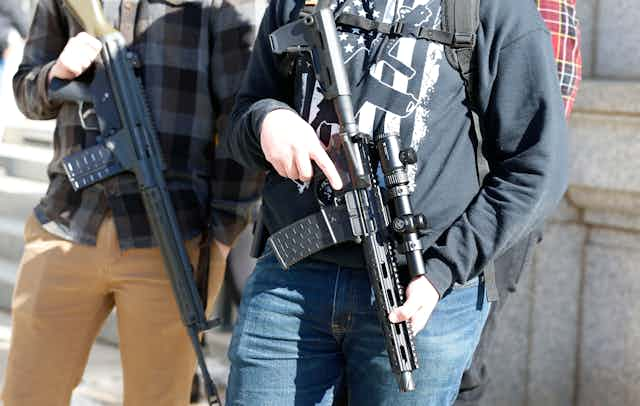

In gun debate, both sides have evidence to back them up
Ph.D. Student in Political Science, University of Missouri-Columbia
Kinder Institute Assistant Professor of Constitutional Democracy, University of Missouri-Columbia
Disclosure statement
Jennifer Selin has received funding for her research on the executive branch from the Administrative Conference of the United States. In addition, she has received funding for her research on Congress from the Dirksen Congressional Center and the Center for Effective Lawmaking.
Zach Lang does not work for, consult, own shares in or receive funding from any company or organisation that would benefit from this article, and has disclosed no relevant affiliations beyond their academic appointment.
View all partners
Gun control is back in the U.S. political debate, in the wake of mass shootings in California, Boulder and Atlanta.
Democrats see stricter gun control as a step toward addressing the problem. In March 2021, as the House of Representatives passed two gun control bills, Speaker Nancy Pelosi claimed that the “ solutions will save lives .”
Many Republicans disagree, arguing as Sen. Ted Cruz has that proposed laws seeking to require background checks on all firearms sales and transfers and to ban assault weapons are “ ridiculous theater ” that fail to reduce mass shootings.
As two political scientists trained in data analysis , we set out to determine whether gun control legislation actually prevents mass shootings. We collected data on all mass shootings that occurred between February 1980 and February 2020. We then examined key information on the perpetrators, weapons used and laws in effect at the time of shooting.
Our research, which is yet to be published in an academic journal, suggests that there is statistical evidence to support both parties’ positions about gun control legislation.
While stricter gun control laws may make mass shootings slightly less common, our research suggests that the rhetoric of both parties may not tell the full story. Rather than federal gun control laws, policies that focus on violence prevention at the community or individual levels may be more effective at preventing mass shooting deaths.
Mass shootings in the past 40 years
We defined a mass shooting as a single incident in which a perpetrator with no connection to gang activity or organized crime shot and killed three or more people. This is similar to the definition Congress uses .
We found there were 112 of these events between 1980 and 2020; the number of mass shootings each year has increased over time. An overwhelming majority of mass shooters – 87% of them – obtained their firearms legally. Nearly all shooters – 93% – shot their victims in the same state where they obtained their weapons.
These facts suggest that existing gun laws and regulations governing gun purchases and firearms that cross state lines may not be working to reduce mass shootings. Our study did not address whether or how other forms of gun violence might be affected by those laws.
In fact, mass shootings tended to occur in states with stricter regulations. Of the states with the highest per capita rates of mass shootings, many – like Connecticut, Maryland and California – employ background checks and assault weapons bans.
By contrast, 18 states did not have a single mass shooting event over the entire 40-year period. Many of these states – like West Virginia, Wyoming and South Dakota – have high rates of gun ownership and relatively loose gun control laws.
But those data patterns don’t tell the full story of our analysis.
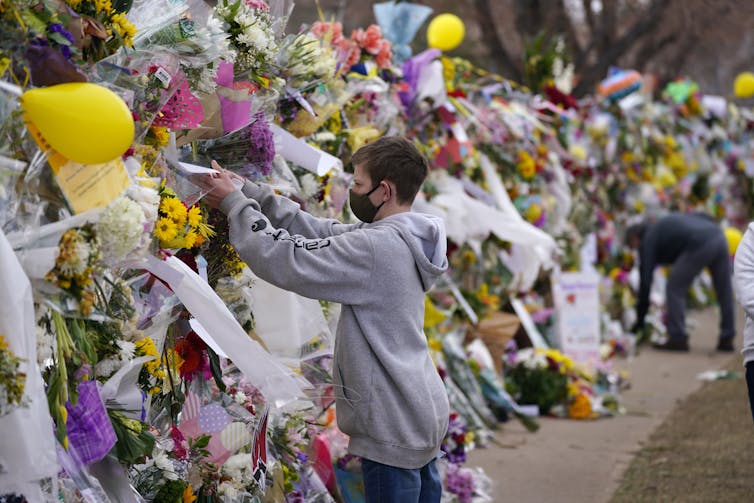
The effects of gun laws
Gun laws aren’t the only factors that affect where and when mass shootings occur. The number of police officers per capita, a community’s population density and crime rate, and other demographic characteristics such as unemployment rates and average income can also matter.
We used statistical methods to control for those factors, narrowing our analysis to find out whether various types of gun control laws affected the number of mass shootings or number of mass shooting deaths in each state each year.
Specifically, we examined the effects of four different types of gun control legislation: background checks; assault weapons bans; high-capacity magazine bans; and “ extreme risk protection order ” or “red flag laws” that let a court determine whether to confiscate the guns of someone deemed a threat to themselves or others.
We found that background check requirements, assault weapons bans and high-capacity magazine bans each reduce the number of mass shootings in the United States – but only by a small amount. For instance, enacting a statewide assault weapons ban decreases the number of mass shootings in the state by one shooting every six years. And none of the four types of gun control legislation correlate with fewer total mass shooting deaths.
And laws that remove an individual’s right to own firearms if that individual poses a risk to the community do not affect the number of mass shooting events.
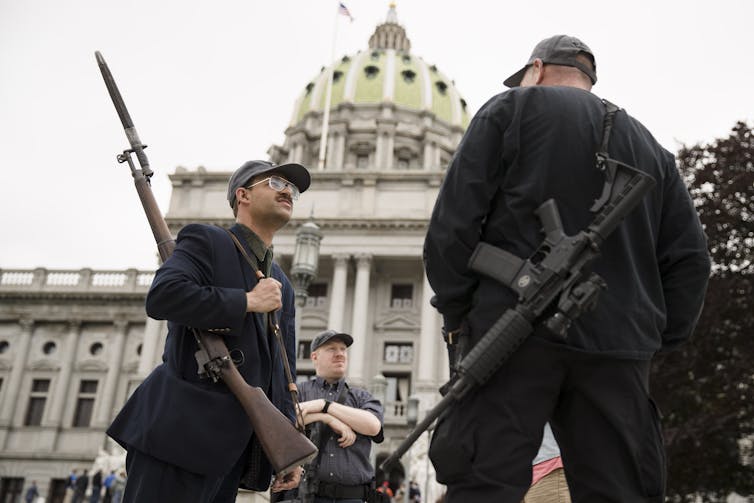
Beyond gun control
Our analysis suggests that Americans who want to make mass shootings less frequent and less deadly may want to think beyond gun control legislation.
Statistically, mass shootings tend to occur in large, densely populated states with higher income and education levels per capita. While these states often respond to mass shootings by passing gun control legislation, it may be that alternative avenues are more successful.
For example, we find that increasing the number of police officers per capita decreases the number of mass shootings.
There is a wide variety of policy options designed to prevent mass shootings. The American Psychological Association suggests a comprehensive community approach that works to identify prevention strategies that bring public safety officials, schools, public health systems and faith-based groups together to reduce gun violence.
Aaron Stark , who says he was almost a mass shooter, explains that mass shootings can be an act of desperation resulting from frustration, stress and an individual’s perception that they lack power. This is in line with a new U.S. Secret Service report that suggests politicians may need to think beyond the accessibility of guns. Violence prevention strategies that focus on interpersonal and community relations may be more effective than gun control legislation.
Framing the debate
Many policy options involve value judgments stemming from beliefs about the U.S. Constitution and the power of government to regulate guns.
Among people who think that restricting gun access reduces mass shootings, people disagree over whether the country should prioritize the individual freedoms of gun owners or the safety and peace of mind of non-gun owners. These differing views can reflect different interpretations of the extent to which the Constitution protects the rights of individuals to keep and bear arms.
States have a role to play, too. Federal gun policy covers the entire nation. But our data indicates that attention to state and local factors can play an important role in preventing mass shootings.
In the end, gun control remains a debate about facts and context, complicated by a disagreement over constitutional values.
[ Get the best of The Conversation, every weekend. Sign up for our weekly newsletter .]
- Gun control
- Gun violence
- Mass shootings
- Second Amendment
- Gun policy US
- Gun research

Events Officer

Lecturer (Hindi-Urdu)

Director, Defence and Security

Opportunities with the new CIEHF

School of Social Sciences – Public Policy and International Relations opportunities
- Our Supporters

One Reason For Persistent Speeding? Roads Whose Designs Seem To Invite It

Photos: Hanging 18 With A Woofing Waverider On Oahu’s North Shore

Ben Lowenthal: The Surprising Persistence Of Conservatism In True Blue Hawaii

Maui Budget Earmarks $2.6 Million For Lahaina Wastewater Permit

This State Agency Transformed Kakaako. Should It Do The Same For Lahaina?
- Special Projects
- Mobile Menu
In Gun Debate, Both Sides Have Evidence To Back Them Up
Gun control is back in the U.S. political debate, in the wake of mass shootings in California, Boulder and Atlanta.
Democrats see stricter gun control as a step toward addressing the problem. In March, as the House of Representatives passed two gun control bills, Speaker Nancy Pelosi claimed that the “ solutions will save lives .”
Many Republicans disagree, arguing as Sen. Ted Cruz has that proposed laws seeking to require background checks on all firearms sales and transfers and to ban assault weapons are “ ridiculous theater ” that fail to reduce mass shootings.
As two political scientists trained in data analysis , we set out to determine whether gun control legislation actually prevents mass shootings. We collected data on all mass shootings that occurred between February 1980 and February 2020. We then examined key information on the perpetrators, weapons used and laws in effect at the time of shooting.
Our research, which is yet to be published in an academic journal, suggests that there is statistical evidence to support both parties’ positions about gun control legislation.
While stricter gun control laws may make mass shootings slightly less common, our research suggests that the rhetoric of both parties may not tell the full story. Rather than federal gun control laws, policies that focus on violence prevention at the community or individual levels may be more effective at preventing mass shooting deaths.
Mass Shootings In The Past 40 years
We defined a mass shooting as a single incident in which a perpetrator with no connection to gang activity or organized crime shot and killed three or more people. This is similar to the definition Congress uses .
We found there were 112 of these events between 1980 and 2020; the number of mass shootings each year has increased over time. An overwhelming majority of mass shooters – 87% of them – obtained their firearms legally. Nearly all shooters – 93% – shot their victims in the same state where they obtained their weapons.
These facts suggest that existing gun laws and regulations governing gun purchases and firearms that cross state lines may not be working to reduce mass shootings. Our study did not address whether or how other forms of gun violence might be affected by those laws.
In fact, mass shootings tended to occur in states with stricter regulations. Of the states with the highest per capita rates of mass shootings, many – like Connecticut, Maryland and California – employ background checks and assault weapons bans.
By contrast, 18 states did not have a single mass shooting event over the entire 40-year period. Many of these states – like West Virginia, Wyoming and South Dakota – have high rates of gun ownership and relatively loose gun control laws.
But those data patterns don’t tell the full story of our analysis.
The Effects Of Gun Laws
Gun laws aren’t the only factors that affect where and when mass shootings occur. The number of police officers per capita, a community’s population density and crime rate, and other demographic characteristics such as unemployment rates and average income can also matter.

We used statistical methods to control for those factors, narrowing our analysis to find out whether various types of gun control laws affected the number of mass shootings or number of mass shooting deaths in each state each year.
Specifically, we examined the effects of four different types of gun control legislation: background checks; assault weapons bans; high-capacity magazine bans; and “ extreme risk protection order ” or “red flag laws” that let a court determine whether to confiscate the guns of someone deemed a threat to themselves or others.
We found that background check requirements, assault weapons bans and high-capacity magazine bans each reduce the number of mass shootings in the United States – but only by a small amount. For instance, enacting a statewide assault weapons ban decreases the number of mass shootings in the state by one shooting every six years. And none of the four types of gun control legislation correlate with fewer total mass shooting deaths.
And laws that remove an individual’s right to own firearms if that individual poses a risk to the community do not affect the number of mass shooting events.
Beyond Gun Control
Our analysis suggests that Americans who want to make mass shootings less frequent and less deadly may want to think beyond gun control legislation.
Statistically, mass shootings tend to occur in large, densely populated states with higher income and education levels per capita. While these states often respond to mass shootings by passing gun control legislation, it may be that alternative avenues are more successful.
For example, we find that increasing the number of police officers per capita decreases the number of mass shootings.
There is a wide variety of policy options designed to prevent mass shootings. The American Psychological Association suggests a comprehensive community approach that works to identify prevention strategies that bring public safety officials, schools, public health systems and faith-based groups together to reduce gun violence.
Increasing the number of police officers per capita decreases the number of mass shootings.
Aaron Stark , who says he was almost a mass shooter, explains that mass shootings can be an act of desperation resulting from frustration, stress and an individual’s perception that they lack power. This is in line with a new U.S. Secret Service report that suggests politicians may need to think beyond the accessibility of guns. Violence prevention strategies that focus on interpersonal and community relations may be more effective than gun control legislation.
Framing The Debate
Many policy options involve value judgments stemming from beliefs about the U.S. Constitution and the power of government to regulate guns.
Among people who think that restricting gun access reduces mass shootings, people disagree over whether the country should prioritize the individual freedoms of gun owners or the safety and peace of mind of non-gun owners. These differing views can reflect different interpretations of the extent to which the Constitution protects the rights of individuals to keep and bear arms.
States have a role to play, too. Federal gun policy covers the entire nation. But our data indicates that attention to state and local factors can play an important role in preventing mass shootings.
In the end, gun control remains a debate about facts and context, complicated by a disagreement over constitutional values.
This article is republished from The Conversation under a Creative Commons license. Read the original article .
--> Sign up for our FREE morning newsletter and face each day more informed. --> Sign up for our FREE morning newsletter and face each day more informed.
Before you go.
Civil Beat is a small nonprofit newsroom that provides free content with no paywall. That means readership growth alone can’t sustain our journalism.
The truth is that less than 1% of our monthly readers are financial supporters. To remain a viable business model for local news, we need a higher percentage of readers-turned-donors.
Will you consider becoming a new donor today?
About the Authors

- Jennifer Selin Jennifer Selin is the Kinder Institute Assistant Professor of Constitutional Democracy, University of Missouri-Columbia Use the RSS feed to subscribe to Jennifer Selin's posts today
Top Stories

UH Regents Are Stepping Up The Search For A New President

Your Electric Bill Could Be Going Up To Help Pay For Wildfire Prevention Measures
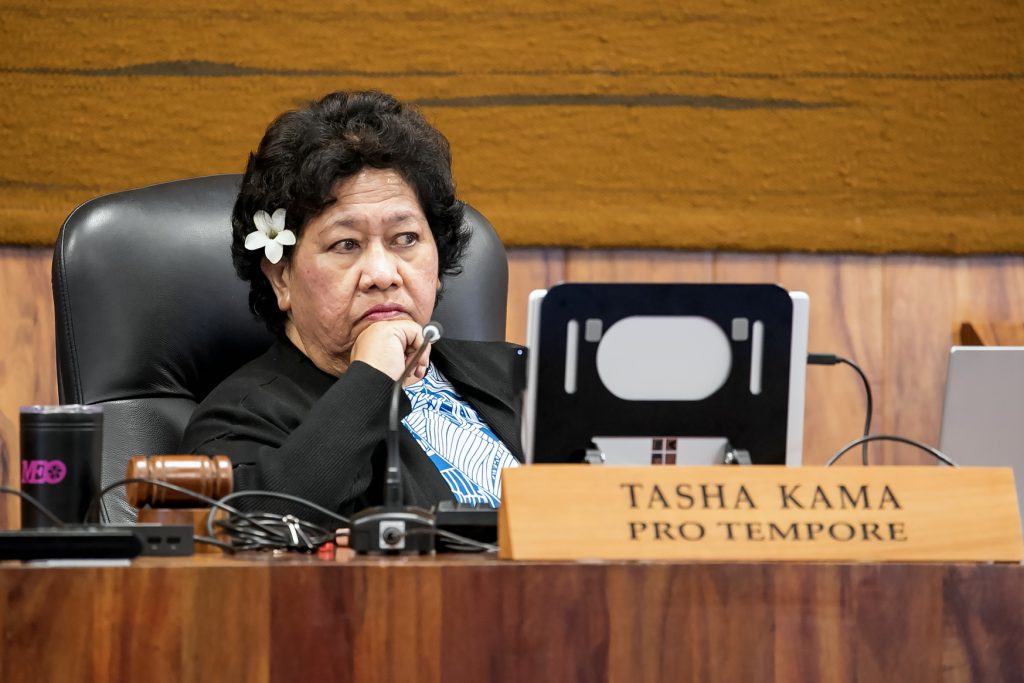
Naka Nathaniel: Are We Coming To The End Of A Cycle Of Accountability In Hawaii?

The Sunshine Blog: The Pot Bill Goes Up In Smoke And Other Tales Of Political Woe

Hawaii’s Deaf Community Is Struggling With Lack Of Certified ASL Interpreters
Get in-depth reporting on hawaii’s biggest issues, sign up for our free morning newsletter.
You're officially signed up for our daily newsletter, the Morning Beat. A confirmation email will arrive shortly.
In the meantime, we have other newsletters that you might enjoy. Check the boxes for emails you'd like to receive.
- Breaking News Alerts What's this? Be the first to hear about important news stories with these occasional emails.
- Special Projects & Investigations What's this? You'll hear from us whenever Civil Beat publishes a major project or investigation.
- Environment What's this? Get our latest environmental news on a monthly basis, including updates on Nathan Eagle's 'Hawaii 2040' series.
- Ideas What's this? Get occasional emails highlighting essays, analysis and opinion from IDEAS, Civil Beat's commentary section.
Inbox overcrowded? Don't worry, you can unsubscribe or update your preferences at any time.
- Skip to main content
- Keyboard shortcuts for audio player
Consider This from NPR

- LISTEN & FOLLOW
- Apple Podcasts
- Google Podcasts
- Amazon Music
Your support helps make our show possible and unlocks access to our sponsor-free feed.
As Lawmakers Debate Gun Control, What Policies Could Actually Help?

Sen. Richard Blumenthal (D-CT) speaks during a rally against gun violence outside the U.S. Capitol on June 6, 2022 in Washington, DC. Drew Angerer/Getty Images hide caption
Sen. Richard Blumenthal (D-CT) speaks during a rally against gun violence outside the U.S. Capitol on June 6, 2022 in Washington, DC.
President Biden urged Congress to act and the House is preparing to pass multiple gun control measures. But the Senate is where a compromise must be made. A bipartisan group of lawmakers is reportedly discussing policies like enhanced background checks and a federal red flag law. While it's unclear what Congress might agree to, researchers do have ideas about what policies could help prevent mass shootings and gun violence. NPR's Nell Greenfieldboyce explains. Hear more from her reporting on Short Wave , NPR's daily science podcast, via Apple , Google , or Spotify . NPR's Cory Turner reports on what school safety experts think can be done to prevent mass shootings, and former FBI agent Katherine Schweit describes where Uvalde police may have erred their active shooter response. Schweit is the author of Stop the Killing: How to End the Mass Shooting Crisis . Help NPR improve podcasts by completing a short, anonymous survey at npr.org/podcastsurvey . In participating regions, you'll also hear a local news segment to help you make sense of what's going on in your community. Email us at [email protected] .
This episode was produced by Brent Baughman, Ayen Bior, and Michael Levitt. It was edited by Patrick Jarenwattananon, Nicole Cohen, Will Stone, Courtney Dorning, and Connor Donevan. Our executive producer is Cara Tallo.
The Reflector News
Featured stories, pros and cons of gun control in the united states, pro by lindsey wormuth | distribution manager.
Stricter gun control can sometimes seem like a never-ending argument against the Second Amendment and about whether gun laws can really keep people safe. The Second Amendment states that because a well-regulated militia is necessary to the security of a free state, the right of the people to keep and bear arms shall not be infringed upon. I never thought gun laws were too weak until I was in a situation involving a minor who had access to guns.
In May of 2018, I was at Noblesville High School the day that a school shooting took place at Noblesville West Middle School, nearly eight minutes away. I remember being told to barricade the door and windows and take cover in a corner. Although the shooting was not at my high school, not knowing what was going on and whether there also would be an active shooter at the high school was terrifying. The middle school shooter was a 13-year-old boy who injured a teacher and a student. According to The Washington Post , there were 90 school shootings nationwide in the two years of 2020-2022. Parents should be able to send their children to school and not worry about their children having to barricade themselves because their school has an active shooter.
“When the Post analyzed these [school] shootings, it found that more than two-thirds were committed by shooters under the age of 18,” according to the Austin American-Statesman . “The analysis found that the median age for school shooters was 16.” To gain more control over who has access to guns, they need to be less accessible to teenagers.
Besides school shootings, a gunman at the Greenwood Park Mall on July 17 “fired shots inside the food court . . . killing three people,” according to WTHR. The gunman was 20 years old, another young shooter.
Gun safety will always be an issue in the United States. To reduce shootings and gun-related suicides, we need to raise the minimum age to purchase guns, ban assault weapons, and require a permit in all states to carry a handgun. Despite the ongoing arguments, gun control legislation must be passed. People are suffering mass tragedies as a result of legislators’ inaction. According to the Indiana Government website , as of July 1, 2022 the State of Indiana will no longer require a handgun permit to legally carry, conceal or transport a handgun within the state. A common misconception about the law is that it allows anyone to be able to carry a handgun. There are still standards you have to meet to be able to legally carry. For example, anyone who was convicted of domestic violence or battery charges, was imprisoned for a federal offense “exceeding one year” or anyone under the age of 18 will not be able to legally carry a gun in Indiana, according to the Indiana Government website.
According to the National Rifle Association , “Even if criminals did submit to background checks, we’ve seen that these checks aren’t effective at stopping those who intend to use guns to commit crimes.” The NRA-ILA has created scenarios showing how background checks can be ineffective. One NRA-ILA scenario says this: “A drug addict lies about their addiction on a federal background check form. Although this individual is committing a federal crime, a background check most likely won’t stop them.” Another NRA-ILA scenario says this: “A person with no criminal history walks into a store to buy a gun they’ll use to commit a crime. A background check most likely won’t stop them.”Ultimately, there is no guaranteed way to identify whether someone who is purchasing a gun will commit a crime, but minimizing the people who can access guns can. Increasing the amount of steps with a background check could help eliminate the people who buy them to commit crimes. People should be able to go to school, the mall, or a club without the fear or threat of a shooting. The only way to reduce shootings is to change the laws.
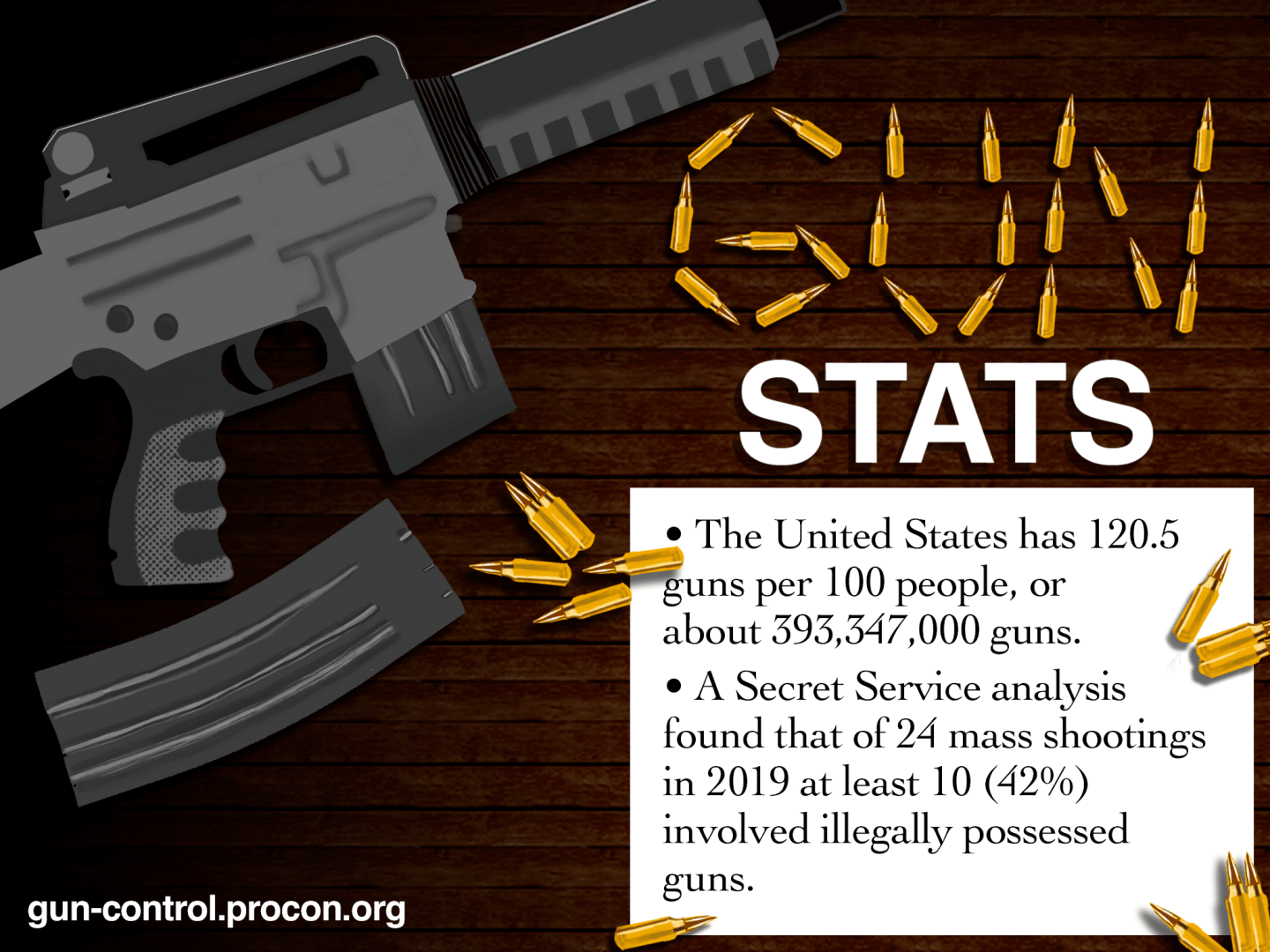
Con by Olivia Pastrick | Staff Writer
Many proponents of an increase in gun control in the United States do not take into consideration the ineffectiveness of the current laws in place regarding citizens’ rights to bear arms. For example, the Gun Control Act of 1968 prohibits holders of Federal Firearms Licenses from transferring licenses to certain groups of people classified as irresponsible or potentially dangerous, according to the U.S. Department of Justice . However, this small form of gun control is clearly not doing its supposed job to stop or limit gun violence in the United States, as indicated by the 110 homicides in Indianapolis alone this year as of June 30, according to Fox59 . The question is still whether federally imposed gun control laws can be effective in reducing gun violence in the United States.
For starters, the root of the problem is not guns, it is people. Criminals with the intent to kill people would not likely be swayed from committing crime by additional laws when they are already breaking other laws. According to the National Rifle Association’s Institute for Legislative Action , 43.2% of prisoners in state or federal prison got their guns “off the street or on the underground market,” which would not be affected by additional gun control laws. Similar logic can be applied in examining the effectiveness of background checks for people who purchase firearms with the intent to harm others. These individuals already intend to break the law, so they would not likely be deterred by having to lie on a government form to pass a background check to obtain a gun.
Similarly, homicide rates in countries where guns are banned have not gone down. According to the California Rifle and Pistol Association , the United Kingdom’s homicide rate in 1996, before handguns were banned, was 1.12 per 100,000 people. In 1997, the year handguns were banned, it rose to 1.24, and in 2002 it peaked at 2.1 homicides per 100,000 people.
There have been times when, in U.S. cities, bans have been placed on the purchase and possession of guns. For example, the city of Chicago enacted a handgun ban in 1982 that prohibited residents from owning handguns for their own use even in their homes and required existing gun owners to re-register their weapons every year, according to ABC7 . This law made Chicago the city with the strictest gun laws in the country at that time, yet it did not curb murders in the city. According to the Chicago Tribune , in the decade after it banned handguns, murders jumped by 41 percent, compared with an 18 percent increase throughout the country. Again, this ban did not deter criminals with the intent to cause harm from obtaining firearms. The law was effectively made unenforceable by a 2010 Supreme Court decision that the Second Amendment protection of the individual’s right to possess firearms applies to cities and states, according to ABC7.
Additionally, there have been situations in the United States in which citizens armed with guns have helped take down people trying to inflict harm. For example, the Greenwood Park Mall shooting on July 17 was stopped within 15 seconds after it began by a citizen with a gun, according to WTHR . A ban on guns, or even stricter gun control laws, might have prevented the bystander from carrying a gun in the mall; and the shooting could have been much worse. Finally, with distrust in the government so high in the United States, pro-gun citizens consider their guns a level of protection against tyrannical government practices, according to NPR . People fighting for their right to bear arms also worry that if the government infringes upon the Second Amendment, nothing will stop the government from changing or taking away other rights that are seen as cornerstones of American life.
Recommended for You
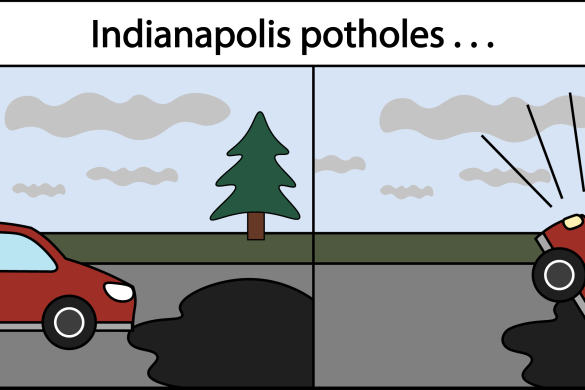
Indianapolis Potholes

Why We Should Not Observe Presidents Day

Daylight Saving Time Should Stay for Good
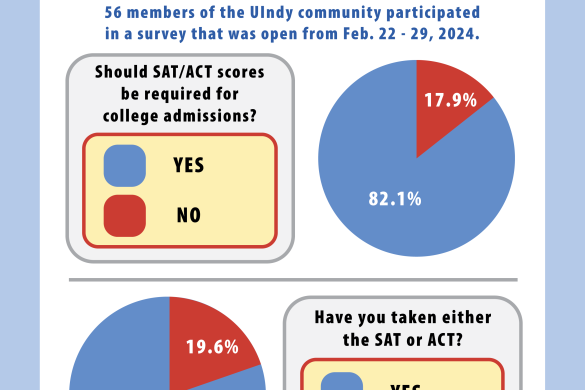
Requiring Standardized Tests Should be a Thing of the Past

‘BookTok’ Thrives on Marketability Rather than Artistic Integrity
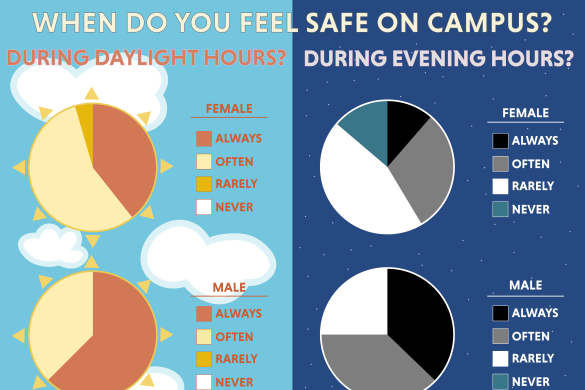
Let’s Change the Campus Security Narrative

I Am Tired of Being a Hoosier in the Current Political Climate

Stop Bullying Taylor Swift for Supporting Her Boyfriend

Advertisement

General Info
- Advertising
- Print Editions
- Reflector Archives
- Accessibility Statement
Subscribe to The Reflector’s email newsletter to stay up-to-date on the latest campus news.
Thank you for visiting nature.com. You are using a browser version with limited support for CSS. To obtain the best experience, we recommend you use a more up to date browser (or turn off compatibility mode in Internet Explorer). In the meantime, to ensure continued support, we are displaying the site without styles and JavaScript.
- View all journals
- My Account Login
- Explore content
- About the journal
- Publish with us
- Sign up for alerts
- Open access
- Published: 10 December 2019
The psychology of guns: risk, fear, and motivated reasoning
- Joseph M. Pierre 1
Palgrave Communications volume 5 , Article number: 159 ( 2019 ) Cite this article
250k Accesses
25 Citations
412 Altmetric
Metrics details
- Politics and international relations
- Social policy
The gun debate in America is often framed as a stand-off between two immutable positions with little potential to move ahead with meaningful legislative reform. Attempts to resolve this impasse have been thwarted by thinking about gun ownership attitudes as based on rational choice economics instead of considering the broader socio-cultural meanings of guns. In this essay, an additional psychological perspective is offered that highlights how concerns about victimization and mass shootings within a shared culture of fear can drive cognitive bias and motivated reasoning on both sides of the gun debate. Despite common fears, differences in attitudes and feelings about guns themselves manifest in variable degrees of support for or opposition to gun control legislation that are often exaggerated within caricatured depictions of polarization. A psychological perspective suggests that consensus on gun legislation reform can be achieved through understanding differences and diversity on both sides of the debate, working within a common middle ground, and more research to resolve ambiguities about how best to minimize fear while maximizing personal and public safety.
Discounting risk
Do guns kill people or do people kill people? Answers to that riddle draw a bright line between two sides of a caricatured debate about guns in polarized America. One side believes that guns are a menace to public safety, while the other believes that they are an essential tool of self-preservation. One side cannot fathom why more gun control legislation has not been passed in the wake of a disturbing rise in mass shootings in the US and eyes Australia’s 1996 sweeping gun reform and New Zealand’s more recent restrictions with envy. The other, backed by the Constitutional right to bear arms and the powerful lobby of the National Rifle Association (NRA), fears the slippery slope of legislative change and refuses to yield an inch while threatening, “I’ll give you my gun when you pry it from my cold, dead hands”. With the nation at an impasse, meaningful federal gun legislation aimed at reducing firearm violence remains elusive.
Despite the 1996 Dickey Amendment’s restriction of federal funding for research on gun violence by the Centers for Disease Control and Prevention (Rostron, 2018 ), more than 30 years of public health research supports thinking of guns as statistically more of a personal hazard than a benefit. Case-control studies have repeatedly found that gun ownership is associated with an increased risk of gun-related homicide or suicide occurring in the home (Kellermann and Reay, 1986 ; Kellermann et al., 1993 ; Cummings and Koepsell, 1998 ; Wiebe, 2003 ; Dahlberg et al., 2004 ; Hemenway, 2011 ; Anglemeyer et al., 2014 ). For homicides, the association is largely driven by gun-related violence committed by family members and other acquaintances, not strangers (Kellermann et al., 1993 , 1998 ; Wiebe, 2003 ).
If having a gun increases the risk of gun-related violent death in the home, why do people choose to own guns? To date, the prevailing answer from the public health literature has been seemingly based on a knowledge deficit model that assumes that gun owners are unaware of risks and that repeated warnings about “overwhelming evidence” of “the health risk of a gun in the home [being] greater than the benefit” (Hemenway, 2011 ) should therefore decrease gun ownership and increase support for gun legislation reform. And yet, the rate of US households with guns has held steady for two decades (Smith and Son, 2015 ) with owners amassing an increasing number of guns such that the total civilian stock has risen to some 265 million firearms (Azrael et al., 2017 ). This disparity suggests that the knowledge deficit model is inadequate to explain or modify gun ownership.
In contrast to the premise that people weigh the risks and benefits of their behavior based on “rational choice economics” (Kahan and Braman, 2003 ), nearly 50 years of psychology and behavioral economics research has instead painted a picture of human decision-making as a less than rational process based on cognitive short-cuts (“availability heuristics”) and other error-prone cognitive biases (Tversky and Kahneman, 1974 ; Kunda, 1990 ; Haselton and Nettle, 2006 ; Hibert, 2012 ). As a result, “consequentialist” approaches to promoting healthier choices are often ineffective. Following this perspective, recent public health efforts have moved beyond educational campaigns to apply an understanding of the psychology of risky behavior to strike a balance between regulation and behavioral “nudges” aimed at reducing harmful practices like smoking, unhealthy eating, texting while driving, and vaccine refusal (Atchley et al., 2011 ; Hansen et al., 2016 ; Matjasko et al., 2016 ; Pluviano et al., 2017 ).
A similar public health approach aimed at reducing gun violence should take into account how gun owners discount the risks of ownership according to cognitive biases and motivated reasoning. For example, cognitive dissonance may lead those who already own guns to turn a blind eye to research findings about the dangers of ownership. Optimism bias, the general tendency of individuals to overestimate good outcomes and underestimate bad outcomes, can likewise make it easy to disregard dangers by externalizing them to others. The risk of suicide can therefore be dismissed out of hand based on the rationale that “it will never happen to me,” while the risk of homicide can be discounted based on demographic factors. Kleck and Gertz ( 1998 ) noted that membership in street gangs and drug dealing might be important confounds of risk in case control studies, just as unsafe storage practices such as keeping a firearm loaded and unlocked may be another (Kellerman et al., 1993 ). Other studies have found that the homicide risk associated with guns in the home is greater for women compared to men and for non-whites compared to whites (Wiebe, 2003 ). Consequently, white men—by far the largest demographic that owns guns—might be especially likely to think of themselves as immune to the risks of gun ownership and, through confirmation bias, cherry-pick the data to support pre-existing intuitions and fuel motivated disbelief about guns. These testable hypotheses warrant examination in future research aimed at understanding the psychology of gun ownership and crafting public health approaches to curbing gun violence.
Still, while the role of cognitive biases should be integrated into a psychological understanding of attitudes towards gun ownership, cognitive biases are universal liabilities that fall short of explaining why some people might “employ” them as a part of motivated reasoning to support ownership or to oppose gun reform. To understand the underlying motivation that drives cognitive bias, a deeper analysis of why people own guns is required. In the introductory essay to this journal’s series on “What Guns Mean,” Metzl ( 2019 ) noted that public health efforts to reduce firearm ownership have failed to “address beliefs about guns among people who own them”. In a follow-up piece, Galea and Abdalla ( 2019 ) likewise suggested that the gun debate is complicated by the fact that “knowledge and values do not align” and that “these values create an impasse, one where knowing is not enough” (Galea and Abdalla, 2019 ). Indeed, these and other authors (Kahan and Braman, 2003 ; Braman and Kahan, 2006 ; Pierre, 2015 ; Kalesan et al., 2016 ) have enumerated myriad beliefs and values, related to the different “symbolic lives” and “social meanings” of firearms both within and outside of “gun culture” that drive polarized attitudes towards gun ownership in the US. This essay attempts to further explore the meaning of guns from a psychological perspective.
Fear and gun ownership
Modern psychological understanding of human decision-making has moved beyond availability heuristics and cognitive biases to integrate the role of emotion and affect. Several related models including the “risk-as-feelings hypothesis” (Loewenstein et al., 2001 ), the “affect heuristic” (Slovic et al., 2007 ); and the “appraisal-tendency framework” (Lerner et al., 2015 ) illustrate how emotions can hijack rational-decision-making processes to the point of being the dominant influence on risk assessments. Research has shown that “perceived risk judgments”—estimates of the likelihood that something bad will happen—are especially hampered by emotion (Pachur et al., 2012 ) and that different types of affect can bias such judgments in different ways (Lerner et al., 2015 ). For example, fear can in particular bias assessments away from rational analysis to overestimate risks, as well as to perceive negative events as unpredictable (Lerner et al., 2015 ).
Although gun ownership is associated with positive feelings about firearms within “gun culture” (Pierre, 2015 ; Kalesan et al., 2016 ; Metzl, 2019 ), most research comparing gun owners to non-gun owners suggests that ownership is rooted in fear. While long guns have historically been owned primarily for hunting and other recreational purposes, US surveys dating back to the 1990s have revealed that the most frequent reason for gun ownership and more specifically handgun ownership is self-protection (Cook and Ludwig, 1997 ; Azrael et al., 2017 ; Pew Research Center, 2017 ). Research has likewise shown that the decision to obtain a firearm is largely motivated by past victimization and/or fears of future victimization (Kleck et al., 2011 ; Hauser and Kleck, 2013 ).
A few studies have reported that handgun ownership is associated with past victimization, perceived risk of crime, and perceived ineffectiveness of police protection within low-income communities where these concerns may be congruent with real risks (Vacha and McLaughlin, 2000 , 2004 ). However, gun ownership tends to be lower in urban settings and in low-income families where there might be higher rates of violence and crime (Vacha and McLaughlin, 2000 ). Instead, the largest demographic of gun owners in the US are white men living in rural communities who are earning more than $100K/year (Azrael et al., 2017 ). Mencken and Froese ( 2019 ) likewise reported that gun owners tend to have higher incomes and greater ratings of life happiness than non-owners. These findings suggest a mismatch between subjective fear and objective reality.
Stroebe and colleagues ( 2017 ) reported that the specific perceived risk of victimization and more “diffuse” fears that the world is a dangerous place are both independent predictors of handgun ownership, with perceived risk of assault associated with having been or knowing a victim of violent crime and belief in a dangerous world associated with political conservatism. These findings hint at the likelihood that perceived risk of victimization can be based on vicarious sources with a potential for bias, whether through actual known acquaintances or watching the nightly news, conducting a Google search or scanning one’s social media feed, or reading “The Armed Citizen” column in the NRA newsletter The American Rifleman . It also suggests that a general fear of crime, independent of actual or even perceived individual risk, may be a powerful motivator for gun ownership for some that might track with race and political ideology.
Several authors have drawn a connection between gun ownership and racial tensions by examining the cultural symbolism and socio-political meaning of guns. Bhatia ( 2019 ) detailed how the NRA’s “disinformation campaign reliant on fearmongering” is constructed around a narrative of “fear and identity politics” that exploits current xenophobic sentiments related to immigrants. Metzl ( 2019 ) noted that during the 1960s, conservatives were uncharacteristically in favor of gun control when armed resistance was promoted by Malcolm X, the Black Panther Party, and others involved in the Black Power Movement. Today, Metzl argues, “mainstream society reflexively codes white men carrying weapons in public as patriots, while marking armed black men as threats or criminals.” In support of this view, a 2013 study found that having a gun in the home was significantly associated with racism against black people as measured by the Symbolic Racism Scale, noting that “for each 1 point increase in symbolic racism, there was a 50% greater odds of having a gun in the home and a 28% increase in the odds of supporting permits to carry concealed handguns” (O’Brien et al., 2013 ). Hypothesizing that guns are a symbol of hegemonic masculinity that serves to “shore up white male privilege in society,” Stroud ( 2012 ) interviewed a non-random sample of 20 predominantly white men in Texas who had licenses for concealed handgun carry. The men described how guns help to fulfill their identities as protectors of their families, while characterizing imagined dangers with rhetoric suggesting specific fears about black criminals. These findings suggest that gun ownership among white men may be related to a collective identity as “good guys” protecting themselves against “bad guys” who are people of color, a premise echoed in the lay press with headlines like, “Why Are White Men Stockpiling Guns?” (Smith, 2018 ), “Report: White Men Stockpile Guns Because They’re Afraid of Black People” (Harriott, 2018 ), and “Gun Rights Are About Keeping White Men on Top” (Wuertenberg, 2018 ).
Connecting the dots, the available evidence therefore suggests that for many gun owners, fears about victimization can result in confirmation, myside, and optimism biases that not only discount the risks of ownership, but also elevate the salience of perceived benefit, however remote, as it does when one buys a lottery ticket (Rogers and Webley, 2001 ). Indeed, among gun owners there is widespread belief that having a gun makes one safer, supported by published claims that where there are “more guns”, there is “less crime” (Lott, 1998 , 1999 ) as well as statistics and anecdotes about successful defensive gun use (DGU) (Kleck and Gertz, 1995 , 1998 ; Tark and Kleck, 2004 ; Cramer and Burnett, 2012 ). Suffice it to say that there have been numerous debates about how to best interpret this body of evidence, with critics claiming that “more guns, less crime” is a myth (Ayres and Donohue, 2003 ; Moyer, 2017 ) that has been “discredited” (Wintemute, 2008 ) and that the incidence of DGU has been grossly overestimated and pales in comparison to the risk of being threatened or harmed by a gun in the home (Hemenway, 1997 , 2011 ; Cook and Ludwig, 1998 ; Azrael and Hemenway, 2000 ; Hemenway et al., 2000 ). Attempts at objective analysis have concluded that surveys to date have defined and measured DGU inconsistently with unclear numbers of false positives and false negatives (Smith, 1997 ; McDowall et al., 2000 ; National Research Council, 2005 ; RAND, 2018 ), that the causal effects of DGU on reducing injury are “inconclusive” (RAND, 2018 ), and that “neither side seems to be willing to give ground or see their opponent’s point of view” (Smith, 1997 ). With the scientific debate about DGU mirrored in the lay press (Defilippis and Hughes, 2015 ; Kleck, 2015 ; Doherty, 2015 ), a rational assessment of whether guns make owners safer is hampered by a lack of “settled science”. With no apparent consensus, motivated reasoning can pave the way to the nullification of opposing arguments in favor of personal opinions and ideological stances.
For gun owners, even if it is acknowledged that on average successful DGU is much less likely than a homicide or suicide in the home, not having a gun at all translates to zero chance of self-preservation, which are intolerable odds. The bottom line is that when gun owners believe that owning a gun will make them feel safer, little else may matter. Curiously however, there is conflicting evidence that gun ownership actually decreases fears of victimization (Hauser and Kleck, 2013 ; Dowd-Arrow et al., 2019 ). That gun ownership may not mitigate such fears could help to account for why some individuals go on to acquire multiple guns beyond their initial purchase with US gun owners possessing an average of 5 firearms and 8% of owners having 10 or more (Azrael et al., 2017 ).
Gun owner diversity
A psychological model of the polarized gun debate in America would ideally compare those for or against gun control legislation. However, research to date has instead focused mainly on differences between gun owners and non-gun owners, which has several limitations. For example, of the nearly 70% of Americans who do not own a gun, 36% report that they can see themselves owning one in the future (Pew Research Center, 2017 ) with 11.5% of all gun owners in 2015 having newly acquired one in the previous 5 years (Wertz et al., 2018 ). Gun ownership and non-ownership are therefore dynamic states that may not reflect static ideology. Personal accounts such as Willis’ ( 2010 ) article, “I Was Anti-gun, Until I Got Stalked,” illustrate this point well.
With existing research heavily reliant on comparing gun owners to non-gun owners, a psychological model of gun attitudes in the US will have limited utility if it relies solely on gun owner stereotypes based on their most frequent demographic characteristics. On the contrary, Hauser and Kleck ( 2013 ) have argued that “a more complete understanding of the relationship between fear of crime and gun ownership at the individual level is crucial”. Just so, looking more closely at the diversity of gun owners can reveal important details beyond the kinds of stereotypes that are often used to frame political debates.
Foremost, it must be recognized that not all gun owners are conservative white men with racist attitudes. Over the past several decades, women have comprised 9–14% of US gun owners with the “gender gap” narrowing due to decreasing male ownership (Smith and Son, 2015 ). A 2017 Pew Survey reported that 22% of women in the US own a gun and that female gun owners are just as likely as men to belong to the NRA (Pew Research Center, 2017 ). Although the 36% rate of gun ownership among US whites is the highest for any racial demographic, 25% of blacks and 15% of Hispanics report owning guns with these racial groups being significantly more concerned than whites about gun violence in their communities and the US as a whole (Pew Research Center, 2017 ). Providing a striking counterpoint to Stroud’s ( 2012 ) interviews of white gun owners in Texas, Craven ( 2017 ) interviewed 11 black gun owners across the country who offered diverse views on guns and the question of whether owning them makes them feel safer, including if confronted by police during a traffic stop. Kelly ( 2019 ) has similarly offered a self-portrait as a female “left-wing anarchist” against the stereotype of guns owners as “Republicans, racist libertarians, and other generally Constitution-obsessed weirdos”. She reminds us that, “there is also a long history of armed community self-defense among the radical left that is often glossed over or forgotten entirely in favor of the Fox News-friendly narrative that all liberals hate guns… when the cops and other fascists see that they’re not the only ones packing, the balance of power shifts, and they tend to reconsider their tactics”.
Although Mencken and Froese ( 2019 ) concluded that “white men in economic distress find comfort in guns as a means to reestablish a sense of individual power and moral certitude,” their study results actually demonstrated that gun owners fall into distinguishable groups based on different levels of “moral and emotional empowerment” imparted by guns. For example, those with low levels of gun empowerment were more likely to be female and to own long guns for recreational purposes such as hunting and collecting. Other research has shown that the motivations to own a gun, and the degree to which gun ownership is related to fear and the desire for self-protection, also varies according to the type of gun (Stroebe et al., 2017 ). Owning guns, owning specific types of guns (e.g. handguns, long guns, and so-called “military style” semi-automatic rifles like AR-15s), carrying a gun in public, and keeping a loaded gun on one’s nightstand all have different psychological implications. A 2015 study reported that new gun owners were younger and more likely to identify as liberal than long-standing gun owners (Wertz et al., 2018 ). Although Kalesan et al. ( 2016 ) found that gun ownership is more likely among those living within a “gun culture” where ownership is prevalent, encouraged, and part of social life, it would therefore be a mistake to characterize gun culture as a monolith.
It would also be a mistake to equate gun ownership with opposition to gun legislation reform or vice-versa. Although some evidence supports a strong association (Wolpert and Gimpel, 1998 ), more recent studies suggest important exceptions to the rule. While only about 30% of the US population owns a gun, over 70% believes that most citizens should be able to legally own them (Pew Research Center, 2017 ). Women tend to be more likely than men to support gun control, even when they are gun owners themselves (Kahan and Braman, 2003 ; Mencken and Froese, 2019 ). Older (age 70–79) Americans likewise have some of the highest rates of gun ownership, but also the highest rates of support for gun control (Pederson et al., 2015 ). In Mencken and Froese’s study ( 2019 ), most gun owners reporting lower levels of gun empowerment favored bans on semi-automatic weapons and high-capacity magazines and opposed arming teachers in schools. Kahan and Braman ( 2003 ) theorized that attitudes towards gun control are best understood according to a “cultural theory of risk”. In their study sample, those with “hierarchical” and “individualist” cultural orientations were more likely than those with “egalitarian” views to oppose gun control and these perspectives were more predictive than other variables including political affiliation and fear of crime.
In fact, both gun owners and non-owners report high degrees of support for universal background checks; laws mandating safe gun storage in households with children; and “red flag” laws restricting access to firearms for those hospitalized for mental illness or those otherwise at risk of harming themselves or others, those convicted of certain crimes including public display of a gun in a threatening manner, those subject to temporary domestic violence restraining orders, and those on “no-fly” or other watch lists (Pew Research Center, 2017 ; Barry et al., 2018 ). According to a 2015 survey, the majority of the US public also opposes carrying firearms in public spaces with most gun owners opposing public carry in schools, college campuses, places of worship, bars, and sports stadiums (Wolfson et al., 2017 ). Despite broad public support for gun legislation reform however, it is important to recognize that the threat of gun restrictions is an important driver of gun acquisition (Wallace, 2015 ; Aisch and Keller, 2016 ). As a result, proposals to restrict gun ownership boosted gun sales considerably under the Obama administration (Depetris-Chauvin, 2015 ), whereas gun companies like Remington and United Sporting Companies have since filed for bankruptcy under the Trump administration.
A shared culture of fear
Developing a psychological understanding of attitudes towards guns and gun control legislation in the US that accounts for underlying emotions, motivated reasoning, and individual variation must avoid the easy trap of pathologizing gun owners and dismissing their fears as irrational. Instead, it should consider the likelihood that motivated reasoning underlies opinion on both sides of the gun debate, with good reason to conclude that fear is a prominent source of both “pro-gun” and “anti-gun” attitudes. Although the research on fear and gun ownership summarized above implies that non-gun owners are unconcerned about victimization, a closer look at individual study data reveals both small between-group differences and significant within-group heterogeneity. For example, Stroebe et al.’s ( 2017 ) findings that gun owners had greater mean ratings of belief in a dangerous world, perceived risk of victimization, and the perceived effectiveness of owning a gun for self-defense were based on inter-group differences of <1 point on a 7-point Likert scale. Fear of victimization is therefore a universal fear for gun owners and non-gun owners alike, with important differences in both quantitative and qualitative aspects of those fears. Kahan and Braham ( 2003 ) noted that the gun debate is not so much a debate about the personal risks of gun ownership, as it is a one about which of two potential fears is most salient—that of “firearm casualties in a world with insufficient gun control or that of personal defenselessness in a world with excessive control”.
Although this “shared fear” hypothesis has not been thoroughly tested in existing research, there is general support for it based on evidence that fear is an especially potent influence on risk assessment and decision-making when considering low-frequency catastrophic events (Chanel et al., 2009 ). In addition, biased risk assessments have been linked to individual feelings about a specific activity. Whereas many activities in the real world have both high risk and high benefit, positive attitudes about an activity are associated with biased judgments of low risk and high benefit while negative attitudes are associated with biased judgments of high risk and low benefit (Slovic et al., 2007 ). These findings match those of the gun debate, whereby catastrophic events like mass shootings can result in “probability neglect,” over-estimating the likelihood of risk (Sunstein, 2003 ; Sunstein and Zeckhauser, 2011 ) with polarized differences regarding guns as a root cause and gun control as a viable solution. For those that have positive feelings about guns and their perceived benefit, the risk of gun ownership is minimized as discussed above. However, based on findings from psychological research on fear (Loewenstein et al., 2001 ; Slovic et al., 2007 ), the reverse is also likely to be true—those with negative feelings about guns who perceive little benefit to ownership may tend to over-estimate risks. Consistent with this dichotomy, both calls for legislative gun reform, as well as gun purchases increase in the wake of mass shootings (Wallace, 2015 ; Wozniak, 2017 ), with differences primarily predicted by the relative self-serving attributional biases of gun ownership and non-ownership alike (Joslyn and Haider-Markel, 2017 ).
Psychological research has shown that fear is associated with loss of control, with risks that are unfamiliar and uncontrollable perceived as disproportionately dangerous (Lerner et al., 2015 ; Sunstein, 2003 ). Although mass shootings have increased in recent years, they remain extremely rare events and represent a miniscule proportion of overall gun violence. And yet, as acts of terrorism, they occur in places like schools that are otherwise thought of as a suburban “safe spaces,” unlike inner cities where violence is more mundane, and are often given sensationalist coverage in the media. A 2019 Harris Poll found that 79% of Americans endorse stress as a result of the possibility of a mass shooting, with about a third reporting that they “cannot go anywhere without worrying about being a victim” (American Psychological Association, 2019 ). While some evidence suggests that gun owners may be more concerned about mass shootings than non-gun owners (Dowd-Arrow et al., 2019 ), this is again a quantitative difference as with fear of victimization more generally. There is little doubt that parental fears about children being victims of gun violence were particularly heightened in the wake of Columbine (Altheide, 2019 ) and it is likely that subsequent school shootings at Virginia Tech, Sandy Hook Elementary, and Stoneman Douglas High have been especially impactful in the minds of those calling for increasing restrictions on gun ownership. For those privileged to be accustomed to community safety who are less worried about home invasion and have faith in the police to provide protection, fantasizing about “gun free zones” may reflect a desire to recreate safe spaces in the wake of mass shootings that invoke feelings of loss of control.
Altheide ( 2019 ) has argued that mass shootings in the US post-Columbine have been embedding within a larger cultural narrative of terrorism, with “expanded social control and policies that helped legitimate the war on terror”. Sunstein and Zeckhauser ( 2011 ) have similarly noted that following terrorist attacks, the public tends to demand responses from government, favoring precautionary measures that are “not justified by any plausible analysis of expected utility” and over-estimating potential benefits. However, such responses may not only be ineffective, but potentially damaging. For example, although collective anxieties in the wake of the 9/11 terrorist attacks resulted in the rapid implementation of new screening procedures for boarding airplanes, it has been argued that the “theater” of response may have done well to decrease fear without any evidence of actual effectiveness in reducing danger (Graham, 2019 ) while perhaps even increasing overall mortality by avoiding air travel in favor of driving (Sunstein, 2003 ; Sunstein and Zeckhauser, 2011 ).
As with the literature on DGU, the available evidence supporting the effectiveness of specific gun laws in reducing gun violence is less than definitive (Koper et al., 2004 ; Hahn et al., 2005 ; Lee et al., 2017 ; Webster and Wintemute, 2015 ), leaving the utility of gun reform legislation open to debate and motivated reasoning. Several authors have argued that even if proposed gun control measures are unlikely to deter mass shooters, “doing something is better than nothing” (Fox and DeLateur, 2014 ) and that ineffective counter-terrorism responses are worthwhile if they reduce public fear (Sunstein and Zeckhauser, 2011 ). Crucially however, this perspective fails to consider the impact of gun control legislation on the fears of those who value guns for self-protection. For them, removing guns from law-abiding “good guys” while doing nothing to deter access to the “bad guys” who commit crimes is illogical anathema. Gun owners and gun advocates likewise reject the concept of “safe spaces” and regard the notion of “gun free zones” as a liability that invites rather than prevents acts of terrorism. In other words, gun control proposals designed to decrease fear have the opposite of their intended effect on those who view guns as symbols of personal safety, increasing rather than decreasing their fears independently of any actual effects on gun violence. Such policies are therefore non-starters, and will remain non-starters, for the sizeable proportion of Americans who regard guns as essential for self-preservation.
In 2006, Braman and Kahan noted that “the Great American Gun Debate… has convulsed the national polity for the better part of four decades without producing results satisfactory to either side” and argued that consequentialist arguments about public health risks based on cost–benefit analysis are trumped by the cultural meanings of guns to the point of being “politically inert” (Braman and Kahan, 2006 ). More than a decade later, that argument is iterated in this series on “What Guns Mean”. In this essay, it is further argued that persisting debates about the effectiveness of DGU and gun control legislation are at their heart trumped by shared concerns about personal safety, victimization, and mass shootings within a larger culture of fear, with polarized opinions about how to best mitigate those fears that are determined by the symbolic, cultural, and personal meanings of guns and gun ownership.
Coming full circle to the riddle, “Do guns kill people or do people kill people?”, a psychologically informed perspective rejects the question as a false dichotomy that can be resolved by the statement, “people kill people… with guns”. It likewise suggests a way forward by acknowledging both common fears and individual differences beyond the limited, binary caricature of the gun debate that is mired in endless arguments over disputed facts. For meaningful legislative change to occur, the debate must be steered away from its portrayal as two immutable sides caught between not doing anything on the one hand and enacting sweeping bans or repealing the 2nd Amendment on the other. In reality, public attitudes towards gun control are more nuanced than that, with support or opposition to specific gun control proposals predicted by distinct psychological and cultural factors (Wozniak, 2017 ) such that achieving consensus may prove less elusive than is generally assumed. Accordingly, gun reform proposals should focus on “low hanging fruit” where there is broad support such as requiring and enforcing universal background checks, enacting “red flag” laws balanced by guaranteeing gun ownership rights to law-abiding citizens, and implementing public safety campaigns that promote safe firearm handling and storage. Finally, the Dickey Amendment should be repealed so that research can inform public health interventions aimed at reducing gun violence and so that individuals can replace motivated reasoning with evidence-based decision-making about personal gun ownership and guns in society.
Aisch G, Keller J (2016). What happens after calls for new gun restrictions? Sales go up. New York Times. https://www.nytimes.com/interactive/2015/12/10/us/gun-sales-terrorism-obama-restrictions.html . Accessed 19 Nov 2019.
Altheide DL (2019) The Columbine shootings and the discourse of fear. Am Behav Sci 52:1354–1370
Article Google Scholar
American Psychological Association (2019). One-third of US adults say fear of mass shootings prevents them from going to certain places or events. Press release, 15 August 2019. https://www.apa.org/news/press/releases/2019/08/fear-mass-shooting . Accessed 19 Nov 2019
Anglemeyer A, Horvath T, Rutherford G (2014) The accessibility of firearms and risk for suicide and homicide victimization among household members: a systematic review and meta-analysis. Ann Int Med 160:101–110
Google Scholar
Atchley P, Atwood S, Boulton A (2011) The choice to text and drive in younger drivers: behavior may shape attitude. Accid Anal Prev 43:134–142
Article PubMed Google Scholar
Ayres I, Donohue III JJ (2003) Shooting down the more guns, less crime hypothesis. Stanf Law Rev 55:1193–1312
Azrael D, Hemenway D (2000) ‘In the safety of your own home’: results from a national survey on gun use at home. Soc Sci Med 50:285–291
Article CAS PubMed Google Scholar
Azrael D, Hepburn L, Hemenway D, Miller M (2017) The stock and flow of U.S. firearms: results from the 2015 National Firearms Survey. Russell Sage Found J Soc Sci 3:38–57
Barry CL, Webster DW, Stone E, Crifasi CK, Vernick JS, McGinty EE (2018) Public support for gun violence prevention policies among gun owners and non-gun owners in 2017. Am J Public Health 108:878–881
Article PubMed PubMed Central Google Scholar
Bhatia R (2019). Guns, lies, and fear: exposing the NRA’s messaging playbook. Center for American Progress. https://www.americanprogress.org/issues/guns-crime/reports/2019/04/24/468951/guns-lies-fear/ . Accessed 19 Nov 2019
Braman D, Kahan DM (2006) Overcoming the fear of guns, the fear of gun control, and the fear of cultural politics: constructing a better gun debate. Emory Law J 55:569–607
Cook PJ, Ludwig J (1997). Guns in America: National survey on private ownership and use of firearms. National Institute of Justice. https://www.ncjrs.gov/pdffiles/165476.pdf . Accessed 19 Nov 2019
Chanel O, Chichilnisky G(2009) The influence of fear in decisions: Experimental evidence. J Risk Uncertain 39(3):271–298
Article MATH Google Scholar
Cook PJ, Ludwig J (1998) Defensive gun use: new evidence from a national survey. J Quant Criminol 14:111–131
Cramer CE, Burnett D (2012). Tough targets: when criminals face armed resistance from citizens. Cato Institute https://object.cato.org/sites/cato.org/files/pubs/pdf/WP-Tough-Targets.pdf . Accessed 19 Nov 2019
Craven J (2017). Why black people own guns. Huffington Post. https://www.huffpost.com/entry/black-gun-ownership_n_5a33fc38e4b040881bea2f37 . Accessed 19 Nov 2019
Cummings P, Koepsell TD (1998) Does owning a firearm increase or decrease the risk of death? JAMA 280:471–473
Dahlberg LL, Ikeda RM, Kresnow M (2004) Guns in the home and risk of a violent death in the home: findings from a national study. Am J Epidemiol 160:929–936
Defilippis E, Hughes D (2015). The myth behind defensive gun ownership: guns are more likely to do harm than good. Politico. https://www.politico.com/magazine/story/2015/01/defensive-gun-ownership-myth-114262 . Accessed 19 Nov 2019
Depetris-Chauvin E (2015) Fear of Obama: an empirical study of the demand for guns and the U.S. 2008 presidential election. J Pub Econ 130:66–79
Doherty B (2015). How to count the defensive use of guns: neither survey calls nor media and police reports capture the importance of private gun ownership. Reason. https://reason.com/2015/03/09/how-to-count-the-defensive-use-of-guns/ . Accessed 19 Nov 2019
Dowd-Arrow B, Hill TD, Burdette AM (2019) Gun ownership and fear. SSM Pop Health 8:100463
Fox JA, DeLateur MJ (2014) Mass shootings in America: moving beyond Newtown. Homicide Stud 18:125–145
Galea S, Abdalla SM (2019) The public’s health and the social meaning of guns. Palgrave Comm 5:111
Graham DA. The TSA doesn’t work—and never has. The Atlantic. https://www.theatlantic.com/politics/archive/2015/06/the-tsa-doesnt-work-and-maybe-it-doesnt-matter/394673/ . Accessed 19 Nov 2019
Hahn RA, Bilukha O, Crosby A, Fullilove MT, Liberman A, Moscicki E, Synder S, Tuma F, Briss PA, Task Force on Community Preventive Services (2005) Firearms laws and the reduction of violence: a systematic review. Am J Prev Med 28:40–71
Hansen PG, Skov LR, Skov KL (2016) Making healthy choices easier: regulation versus nudging. Annu Rev Public Health 37:237–51
Harriott M (2018). Report: white men stockpile guns because they’re afraid of black people. The Root. https://www.theroot.com/report-white-men-stockpile-guns-because-they-re-afraid-1823779218 . Accessed 19 Nov 2019
Haselton MG, Nettle D (2006) The paranoid optimist: an integrative evolutionary model of cognitive biases. Pers Soc Psychol Rev 10:47–66
Hauser W, Kleck G (2013) Guns and fear: a one-way street? Crime Delinquency 59:271–291
Hemenway (1997) Survey research and self-defense gun use: an explanation of extreme overestimates. J Crim Law Criminol 87:1430–1445
Hemenway D, Azrael D, Miller M (2000) Gun use in the United States: results from two national surveys. Inj Prev 6:263–267
Article CAS PubMed PubMed Central Google Scholar
Hemenway D (2011) Risks and benefits of a gun in the home. Am J Lifestyle Med 5:502–511
Hibert M (2012) Toward a synthesis of cognitive biases: how noisy information processing can bias human decision making. Psychol Bull 138:211–237
Joslyn MR, Haider-Markel DP (2017) Gun ownership and self-serving attributions for mass shooting tragedies. Soc Sci Quart 98:429–442
Kahan DM, Braman D (2003) More statistics, less persuasion: a cultural theory of gun-risk perceptions. Univ Penn Law Rev 151:1291–1327
Kalesan B, Villarreal MD, Keyes KM, Galea S (2016) Gun ownership and social gun culture. Inj Prev 22:216–220
Kellermann AL, Reay DT (1986) Protection or peril? An analysis of fire-arm related deaths in the home. N Engl J Med 314:1557–1560
Kellermann AL, Rivara FP, Rushforth NB, Banton JG, Reay DT, Francisco JT, Locci A, Prodzinski J, Hackman BB, Somes G (1993) Gun ownership as a risk factor for homicide in the home. N Engl J Med 329:1084–1091
Kellerman AL, Somes G, Rivara F, Lee R, Banton J (1998) Injuries and deaths due to firearms in the home. J Trauma Inj Infect Crit Care 45:263–267
Kelly K (2019) I’m a left-wing anarchist. Guns aren’t just for right-wingero. Vox. https://www.vox.com/first-person/2019/7/1/18744204/guns-gun-control-anarchism . Accessed 19 Nov 2019
Kleck G (2015) Defensive gun use is not a myth: why my critics still have it wrong. Politico. https://www.politico.com/magazine/story/2015/02/defensive-gun-ownership-gary-kleck-response-115082 . Accessed 19 Nov 2019
Kleck G, Kovandzic T, Saber M, Hauser W (2011) The effect of perceived risk and victimization on plans to purchase a gun for self-protection. J Crim Justice 39:312–319
Kleck G, Gertz M (1995) Armed resistance to crime: the prevalence and nature of self-defense with a gun. J Crim Law Criminol 86:150–187
Kleck G, Gertz M (1998) Carrying guns for protection: results from the national self-defense survey. J Res Crime Delinquency 35:193–224
Koper CS, Woods DJ, Roth JA (2004) An updated assessment of the federal assault weapons ban: impacts on gun markets and gun violence, 1994–2003. https://www.ncjrs.gov/pdffiles1/nij/grants/204431.pdf . Accessed 19 Nov 2019
Kunda Z (1990) The case for motivated reasoning. Psychol Bull 108:480–498
Lee LK, Fleegler EW, Farrell C, Avakame E, Srinivasan S, Hemenway D, Monuteaux MC (2017) Firearm laws and firearm homicides: a systematic review. JAMA Int Med 177:106–119
Lerner JS, Li Y, Valdesolo P, Kassam KS (2015) Emotion and decision making. Ann Rev Psychol 66:799–823
Loewenstein GF, Weber EU, Hsee CK, Welch N (2001) Risk as feelings. Psychol Bull 127:267–286
Lott JR (1998) More guns, less crime. University of Chicago Press, Chicago
Lott JR (1999) More guns, less crime: a response to Ayres and Donohue. Yale Law & Economics Research paper no. 247 https://papers.ssrn.com/sol3/papers.cfm?abstract_id=248328 . Accessed 19 Nov 2019
Matjasko JL, Cawley JH, Baker-Goering M, Yokum DV (2016) Applying behavioral economics to public health policy: illustrative examples and promising directions. Am J Prev Med 50:S13–S19
McDowall D, Loftin C, Presser S (2000) Measuring civilian defensive firearm use: a methodological experiment. J Quant Criminol 16:1–19
Mencken FC, Froese P (2019) Gun culture in action. Soc Prob 66:3–27
Metzl J (2019) What guns mean: the symbolic lives of firearms. Palgrave Comm 5:35
Article ADS Google Scholar
Moyer MW (2017). More guns do not stop more crimes, evidence shows. Sci Am https://www.scientificamerican.com/article/more-guns-do-not-stop-more-crimes-evidence-shows/ . Accessed 19 Nov 2019.
National Research Council (2005) Firearms and violence: a critical review. The National Academies Press, Washington, DC
O’Brien K, Forrest W, Lynott D, Daly M (2013) Racism, gun ownership and gun control: Biased attitudes in US whites may influence policy decisions. PLoS ONE 8(10):e77552
Article ADS PubMed PubMed Central CAS Google Scholar
Pachur T, Hertwig R, Steinmann F (2012) How do people judge risks: availability heuristic, affect heuristic, or both? J Exp Psychol Appl 18:314–330
Pederson J, Hall TL, Foster B, Coates JE (2015) Gun ownership and attitudes toward gun control in older adults: reexamining self interest theory. Am J Soc Sci Res 1:273–281
Pew Research Center (2017) America’s complex relationship with guns. https://www.pewsocialtrends.org/wp-content/uploads/sites/3/2017/06/Guns-Report-FOR-WEBSITE-PDF-6-21.pdf . Accessed 19 Nov 2019
Pierre JM (2015) The psychology of guns. Psych Unseen. https://www.psychologytoday.com/us/blog/psych-unseen/201510/the-psychology-guns . Accessed 19 Nov 2019
Pluviano S, Watt C, Della Salla S (2017) Misinformation lingers in memory: failure of three pro-vaccination strategies. PLoS ONE 23(7):e0811640
RAND (2018) The challenges of defining and measuring defensive gun use. https://www.rand.org/research/gun-policy/analysis/essays/defensive-gun-use.html . Accessed 19 Nov 2019
Rogers P, Webley P (2001) “It could be us!”: cognitive and social psychological factors in UK National Lottery play. Appl Psychol Int Rev 50:181–199
Rostron A (2018) The Dickey Amendment on federal funding for research on gun violence: a legal discussion. Am J Public Health 108:865–867
Slovic P, Finucane ML, Peters E, MacGregor DG (2007) The affect heuristic. Eur J Oper Res 177:1333–1352
Smith TW (1997) A call for a truce in the DGU war. J Crim Law Criminol 87:1462–1469
Smith JA (2018) Why are white men stockpiling guns? Sci Am Blogs. https://blogs.scientificamerican.com/observations/why-are-white-men-stockpiling-guns/ . Accessed 19 Nov 2019
Smith TW, Son J (2015). General social survey final report: Trends in gun ownership in the United States, 1972–2014. http://www.norc.org/PDFs/GSS%20Reports/GSS_Trends%20in%20Gun%20Ownership_US_1972-2014.pdf . Accessed 19 Nov 2019
Stroebe W, Leander NP, Kruglanski AW (2017) Is it a dangerous world out there? The motivational biases of American gun ownership. Pers Soc Psychol Bull 43:1071–1085
Stroud A (2012) Good guys with guns: hegemonic masculinity and concealed handguns. Gend Soc 26:216–238
Sunstein CR (2003) Terrorism and probability neglect. J Risk Uncertain 26:121–136
Sunstein CR, Zeckhauser R (2011) Overreaction to fearsome risks. Environ Resour Econ 48:435–449
Tark J, Kleck G (2004) Resisting crime: the effects of victim action on the outcomes of crimes. Criminol 42:861–909
Tversky A, Kahneman D (1974) Judgment under uncertainty: heuristics and biases. Science 185:1124–1131
Article ADS CAS PubMed Google Scholar
Vacha EF, McLaughlin TF (2000) The impact of poverty, fear of crime, and crime victimization on keeping firearms for protection and unsafe gun-storage practices” A review and analysis with policy recommendations. Urban Educ 35:496–510
Vacha EF, McLaughlin TF (2004) Risky firearms behavior in low-income families of elementary school children: the impact of poverty, fear of crime, and crime victimization on keeping and storing firearms. J Fam Violence 19:175–184
Wallace LN (2015) Responding to violence with guns: mass shootings and gun acquisition. Soc Sci J 52:156–167
Webster DW, Wintemute GJ (2015) Effects of policies designed to keep firearms from high-risk individuals. Ann Rev Public Health 36:21–37
Wertz J, Azrael D, Hemenway D, Sorenson S, Miller M (2018) Differences between new and long-standing US gun owners: results from a National Survey. Am J Public Health 108:871–877
Wiebe DJ (2003) Homicide and suicide risks associated with firearms in the home: a national case-control study. Ann Emerg Med 47:771–782
Willis J (2010). I was anti-gun, until I got stalked. Salon. https://www.salon.com/2010/10/21/buying_gun_protect_from_stalker/ . Accessed 19 Nov 2019
Wintemute GJ (2008) Guns, fear, the constitution, and the public’s health. N. Engl J Med 358:1421–1424
Wolfson JA, Teret SP, Azrael D, Miller M (2017) US public opinion on carrying firearms in public places. Am J Public Health 107:929–937
Wolpert RM, Gimpel JG (1998) Self-interest, symbolic politics, and public attitudes toward gun control. Polit Behav 20:241–262
Wozniak KH (2017) Public opinion about gun control post-Sandy Hook. Crim Just Pol Rev 28:255–278
Wuertenberg N (2018). Gun rights are about keeping white men on top. Washington Post. https://www.washingtonpost.com/news/made-by-history/wp/2018/03/09/gun-rights-are-about-keeping-white-men-on-top . Accessed 19 Nov 2019
Download references
Author information
Authors and affiliations.
David Geffen School of Medicine at UCLA, Department of Psychiatry and Biobehavioral Sciences, Los Angeles, USA
Joseph M. Pierre
You can also search for this author in PubMed Google Scholar
Corresponding author
Correspondence to Joseph M. Pierre .
Ethics declarations
Competing interests.
The author declares no competing interests.
Additional information
Publisher’s note Springer Nature remains neutral with regard to jurisdictional claims in published maps and institutional affiliations.
Rights and permissions
Open Access This article is licensed under a Creative Commons Attribution 4.0 International License, which permits use, sharing, adaptation, distribution and reproduction in any medium or format, as long as you give appropriate credit to the original author(s) and the source, provide a link to the Creative Commons license, and indicate if changes were made. The images or other third party material in this article are included in the article’s Creative Commons license, unless indicated otherwise in a credit line to the material. If material is not included in the article’s Creative Commons license and your intended use is not permitted by statutory regulation or exceeds the permitted use, you will need to obtain permission directly from the copyright holder. To view a copy of this license, visit http://creativecommons.org/licenses/by/4.0/ .
Reprints and permissions
About this article
Cite this article.
Pierre, J.M. The psychology of guns: risk, fear, and motivated reasoning. Palgrave Commun 5 , 159 (2019). https://doi.org/10.1057/s41599-019-0373-z
Download citation
Received : 30 July 2019
Accepted : 27 November 2019
Published : 10 December 2019
DOI : https://doi.org/10.1057/s41599-019-0373-z
Share this article
Anyone you share the following link with will be able to read this content:
Sorry, a shareable link is not currently available for this article.
Provided by the Springer Nature SharedIt content-sharing initiative
This article is cited by
Packing heat: on the affective incorporation of firearms.
- Jussi A. Saarinen
Topoi (2024)
Quick links
- Explore articles by subject
- Guide to authors
- Editorial policies
- International edition
- Australia edition
- Europe edition


The major tests US gun control activists face in 2024
Gun safety groups say they remain undaunted as they plan to push for more change – but they will still face steep hurdles in a crucial election year
T he grim statistics around mass shootings underscore a haunting reality for the US: despite recent legislative efforts at the state and federal levels, gun violence remains alarmingly common across the country.
But gun safety groups say they remain undaunted in 2024, when they plan to push for more change through state legislatures and executive actions. And as voters turn their attention to a crucial election year, gun safety groups are also prepared to press candidates on their plans to curb gun violence.
The simple statistics demonstrate what a weighty task it is. In December, a gunman carried out a shooting spree across two communities in central Texas, killing six people. The attack was the 39th mass shooting in the US last year, marking a new single-year record for the country. The previous record of 36 mass shootings had been set just one year prior.
Gun reform groups will still face steep hurdles as they attempt to reduce the carnage.
Republicans, who now control the House of Representatives, have shown little appetite for passing another federal gun safety bill, following the enactment of the Bipartisan Safer Communities Act in 2022. The supreme court’s conservative majority has similarly embraced a rather expansive definition of second amendment rights, jeopardizing gun safety laws passed at the state and federal level.
For gun safety groups, the first significant test of 2024 will come in June, when the supreme court is expected to decide its next major second amendment case.
United States v Rahimi
The case centers on Zackey Rahimi, who was placed under a domestic violence restraining order after allegedly assaulting his then girlfriend and firing a gun in front of bystanders in 2019. Per federal law, those under such restraining orders are prohibited from purchasing or possessing firearms, but Rahimi is now challenging that statute based on another supreme court decision.
In 2022, the supreme court overturned New York’s century-old regulation requiring that anyone seeking to carry a handgun in public must show “proper cause” to do so. The case, New York State Rifle & Pistol Association v Bruen, established a new test to determine the constitutionality of gun regulations. The conservative justices ruled that any gun regulation must be “consistent with the nation’s historical tradition of firearm regulation”.
The ruling has sparked a flurry of challenges to firearm regulations and forced gun safety advocates to search the historical record for analogous laws from the nation’s founding to defend their proposals. In the case of Rahimi, the conservative-leaning US court of appeals for the fifth circuit agreed with his argument that the law blocking those under domestic violence restraining orders from accessing firearms is inconsistent with historical gun laws and is thus unconstitutional.
That ruling has now been appealed to the supreme court, which held oral arguments in the case in November. The justices’ decision could have far-reaching implications for the future of gun rights as well as the safety of survivors of domestic violence. According to a 2023 study , more than half of domestic violence homicides involve firearms.
“The stakes are incredibly high in Rahimi because it would be the first time the supreme court strikes down a federal law on gun safety in decades. And of course, it’s a particularly important federal law,” said Nick Suplina, senior vice-president of law and policy for the gun safety group Everytown.
The Rahimi ruling may also help clarify lower courts’ apparent confusion over applying the Bruen test. Thus far, courts have reached conflicting decisions over how to interpret the “historical tradition” of gun laws, said Jacob Charles, a professor at Pepperdine Caruso School of Law and a constitutional scholar focusing on the second amendment.
“I certainly think that confusion is only growing,” Charles said. “We see circuit courts even disagree with one another and are kind of all over the place, the same way that the district courts have been. So I don’t think we’re having any more guidance until the [supreme] court weighs in more.”
During the oral arguments, some of the court’s conservative justices appeared skeptical of the fifth circuit’s decision, seemingly hesitant to stretch gun rights to the point of protecting alleged domestic abusers. Even if the supreme court rules against Rahimi, the decision will probably not mark a sea change in conservative justices’ overall approach to the second amendment. Charles, who filed an amicus brief in the Rahimi case, suggested the justices may issue a narrow ruling that upholds the law regarding domestic violence protection orders but leaves the Bruen test intact.
“That will still leave lots of other cases, like assault weapons bans, outside the scope of this new kind of revisionary guidance,” Charles said.
That dynamic could complicate gun safety groups’ efforts to strengthen the nation’s gun laws, including their campaign to re-enact a federal assault weapons ban.
‘A political issue that doesn’t need to be’
The country’s worst mass shooting of 2023 unfolded in October in Lewiston, Maine, where a gunman killed 18 people at a bowling alley and a bar. The devastating attack prompted a change of heart for congressman Jared Golden, the conservative Democrat who represents Lewiston in the House of Representatives. Reversing his previous position, Golden announced he would now support reinstating the federal assault weapons ban, which expired in 2004.
after newsletter promotion
“I have opposed efforts to ban deadly weapons of war,” Golden said. “The time has now come for me to take responsibility for this failure, which is why I now call on the United States Congress to ban assault rifles.”
Gun safety groups praised Golden’s announcement, while noting that his new position brings him closer in line with voters’ stance on an assault weapons ban. According to a Fox News poll conducted in April, 61% of voters support banning assault weapons. Other proposed gun regulations, such as enacting universal background checks and mandating safe storage of firearms, enjoy even more widespread support among voters.

“We’re hopeful that [Golden’s announcement] will spur others to be able to take some of that political courage and step out there,” said Vanessa Gonzalez, vice-president of government and political affairs for the gun safety group Giffords. “It’s a political issue that doesn’t need to be. We just need more folks to have the courage to say that and to step out on those issues.”
The 2024 elections will provide gun safety groups with many opportunities to push sitting lawmakers and first-time candidates on enacting more firearm regulations.
“We are continuing to look for younger elected officials or candidates who are not afraid to say gun violence in America has to stop and then actually see it through,” Gonzalez said. “And then on the flip side, what does it look like once [they are] elected to really hold them accountable for what they said they were going to do?”
Suplina predicted that gun safety will play a prominent role in campaign ads and messaging in 2024, partly because the issue might help Democrats sway the independent voters who will be crucial in determining the outcomes of close races. An AP/Norc poll conducted over the summer found that 61% of independents believe gun laws should be made more strict.
“If you want to win the middle of the American electorate, you have to be strong on gun safety,” Suplina said. “And being strong on gun safety means recognizing that assault weapons should not be in the hands of your average citizens.”
So far, efforts to reinstate an assault weapons ban have met consistent resistance from Republicans in Congress. The Senate majority leader, Democrat Chuck Schumer, most recently reintroduced the assault weapons ban bill in December, but Republicans blocked the legislation from advancing. Even if Senate Democrats could get the bill passed, it would almost certainly fail in the Republican-controlled House.
Despite the obstacles presented by a divided Congress, gun safety groups have found recent success at the state level, and they hope to build upon those wins in 2024. According to Everytown , state legislatures passed a record-breaking 130 gun safety bills in 2023 while blocking 95% of the gun lobby’s agenda.
Gun safety groups are also exploring options beyond Congress as it pushes for change at the federal level. The Bureau of Alcohol, Tobacco, Firearms and Explosives has proposed a new rule aimed at closing the so-called “gun show loophole”, which allows some private gun sellers to perform transactions without completing background checks on prospective buyers. Hundreds of thousands of gun safety proponents have already submitted comments in support of the proposed rule, according to Everytown .
That campaign reflects gun safety groups’ overall goal to put more pressure on sellers and manufacturers of firearms in the year ahead. Such efforts may face resistance from conservative courts, but gun safety advocates fervently believe that the political momentum is on their side heading into 2024.
“The state of the gun violence prevention movement in our country is strong and stronger than it’s ever been,” Suplina said. “Courts or no courts, Congress or no Congress, we’re going to really do a lot to animate the public to understand who it is that’s flooding the streets with guns and making money off of it while the rest of us suffer.”
- US gun control
- US supreme court
- US politics
Most viewed
Why the Second Amendment may be losing relevance in gun debate
Experts said legislatures are doing the work in setting the landscape on guns.
This report is a part of "Rethinking Gun Violence," an ABC News series examining the level of gun violence in the U.S. -- and what can be done about it.
In the bitter debate over gun control , battle lines are often drawn around the Second Amendment, with many in favor of gun rights pointing to it as the source of their constitutional authority to bear arms, and some in favor of tighter gun control disagreeing with that interpretation.
But if the purpose of the debate is to reduce the tragic human toll of gun violence, the focus on Second Amendment is often misplaced, according to many experts on guns and the Constitution.
MORE: America has a gun violence problem. What do we do about it?
They say the battle lines that actually matter have been drawn around state legislatures, which are setting the country's landscape on guns through state laws -- or sometimes, the lack thereof .
Joseph Blocher, professor of law and co-director of the Center for Firearms Law at Duke Law School, described the patchwork of state laws that exists across the country as a "buffer zone" for the Second Amendment.
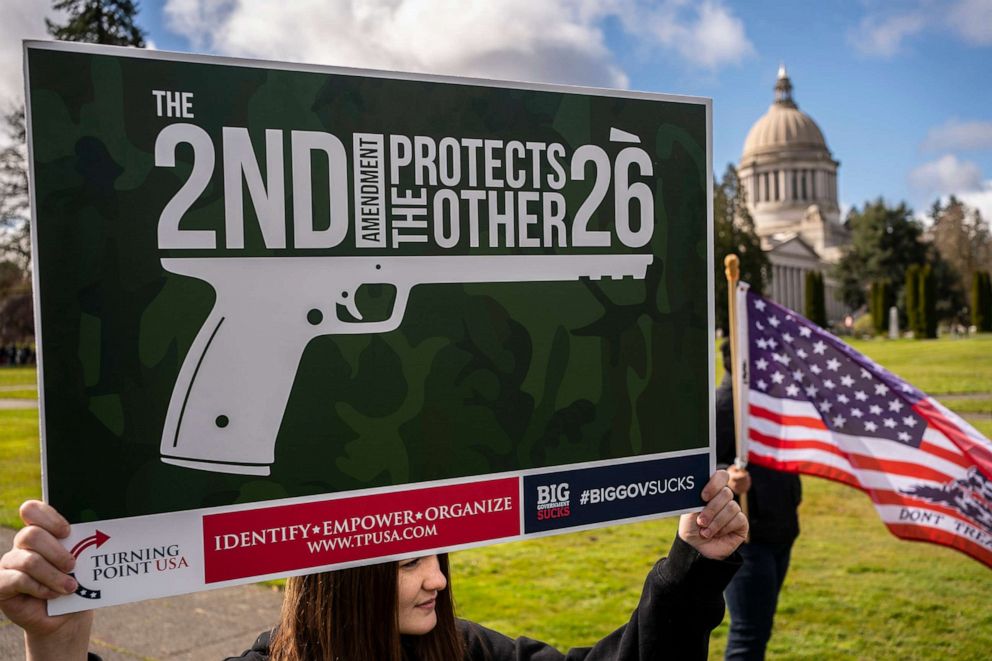
"Before you even get to the Constitution, there's a huge array of other laws super protecting the right to keep and bear arms," Blocher said. "This collection of laws is giving individuals lots of protection for gun-related activity that the Second Amendment would not necessarily require, and certainly, and in almost all of these instances, that no lower court has said the Second Amendment would require."
Watch ABC News Live on Mondays at 3 p.m. to hear more about gun violence from experts during roundtable discussions. And check back tomorrow to read about background checks and how effective they are.
Adam Winkler, a professor of law at the UCLA School of Law, also said the Second Amendment is losing its legal relevance in distinguishing lawful policies from unlawful ones as the gap between what he calls the "judicial Second Amendment" and the "aspirational Second Amendment" widens.
Winkler defines the "judicial Second Amendment" as how courts interpret the constitutional provision in their decisions, and the "aspirational Second Amendment" as how the amendment is used in political dialogue. The latter is "far more hostile to gun laws than the judicial one," he said -- and also more prevalent.
Before you even get to the Constitution, there's a huge array of other laws super protecting the right to keep and bear arms.
"The aspirational Second Amendment is overtaking the judicial Second Amendment in American law," he wrote in the Indiana Law Journal in 2018, a sentiment he repeated in a recent interview with ABC News. "State law is embracing such a robust, anti-regulatory view of the right to keep and bear arms that the judicial Second Amendment, at least as currently construed, seems likely to have less and less to say about the shape of America's gun laws."
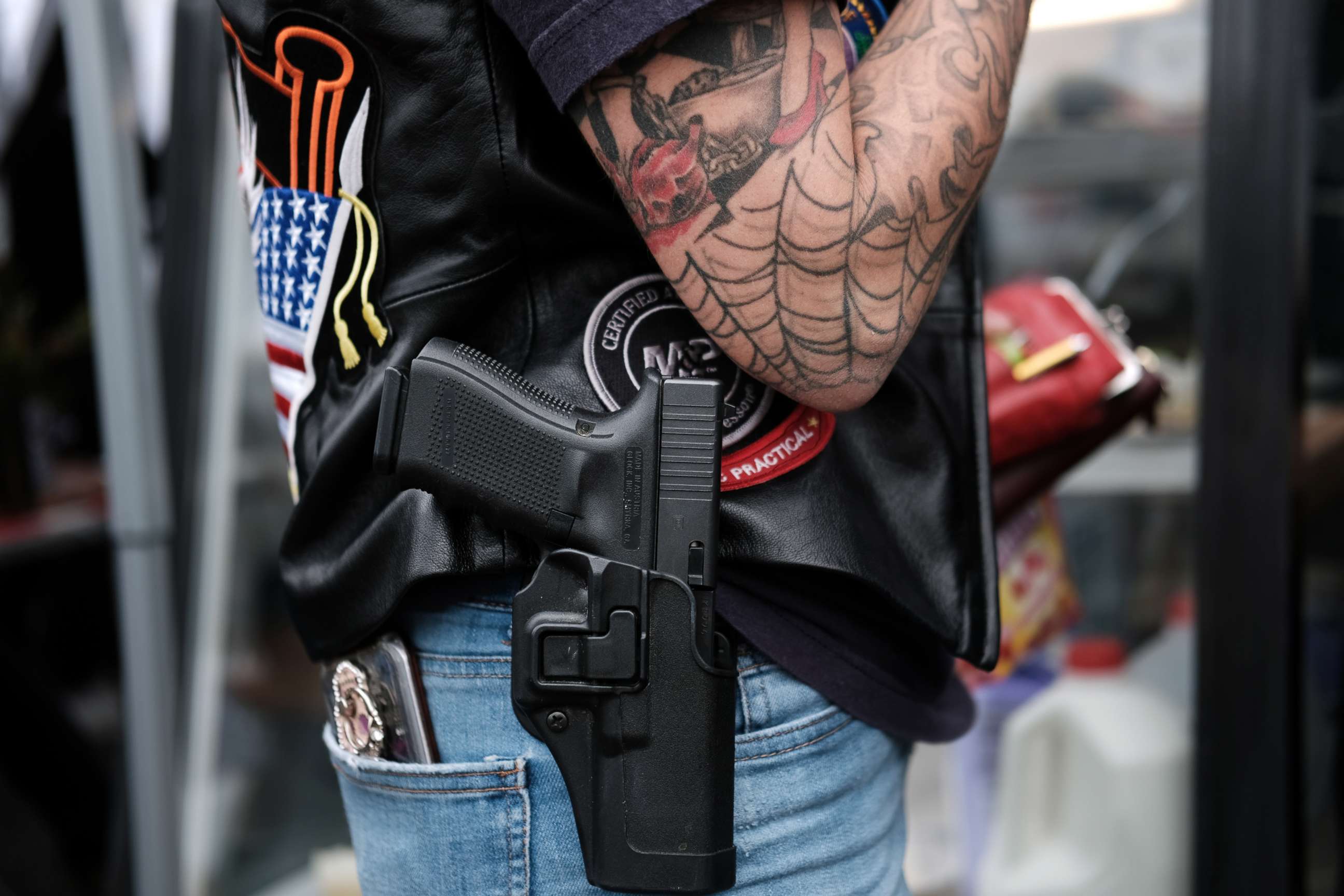
MORE: Inside the rise of AR-15-style rifles in America
Winkler told ABC News the aspirational or "political" Second Amendment has become the basis for expanding gun rights in the last 40 years.
"In the judicial Second Amendment, gun rights advocates haven't found that much protection," Winkler said. "Where they found protection was by getting state legislatures, in the name of the Second Amendment, to legislate for permissive gun laws."
The debate around the Second Amendment (and why some say it might be overrated)
The Second Amendment of the U.S. Constitution reads in full:
"A well-regulated militia, being necessary to the security of a free State, the right of the people to keep and bear Arms, shall not be infringed."
MORE: One nation under fire: A week's glance at gun violence ripping across America
The role of the Second Amendment, like many constitutional rights , is to put limits on what regulations the federal government can pass, and scholars and lawyers have debated its scope since it was ratified in 1791.
Before the U.S. Supreme Court's landmark District of Columbia v. Heller decision in 2008, much of the debate revolved around the meaning of a "well-regulated militia." The Heller decision struck down a handgun ban in Washington, D.C., and established the right for individuals to have a gun for certain private purposes including self-defense in the home. The court expanded private gun ownership protection two years later in McDonald v. City of Chicago , determining that state and local governments are also bound to the Second Amendment.
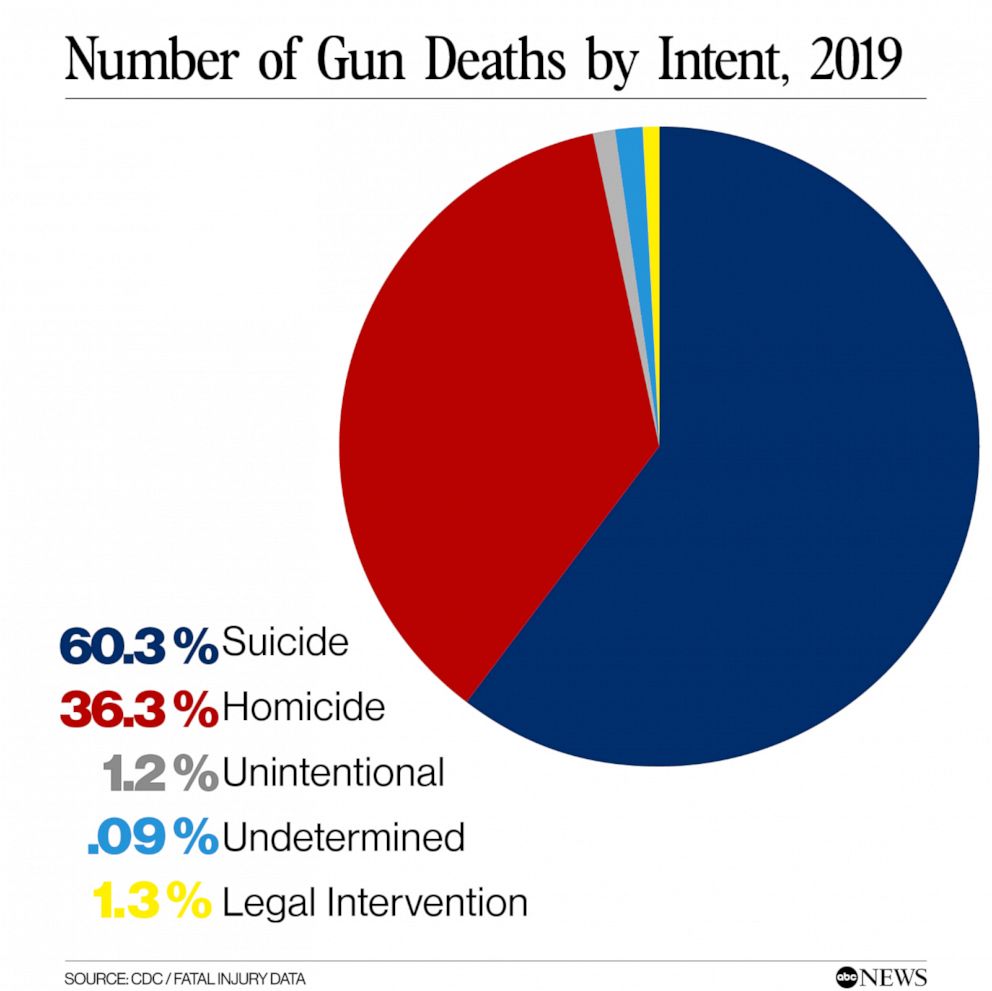
"The Bill of Rights, by its terms , only applies to the federal government, but the Supreme Court, through a doctrine known as incorporation, has made almost all of its guarantees applicable against state and local governments as well. That's what the question was in McDonald," Blocher said. "But some states have chosen to go above and beyond what the court laid out."
Notably, the court in Heller carved out limitations on that individual right and preserved a relatively broad range of possible gun regulation -- such as allowing for their restriction in government buildings, schools and polling places -- but in many instances, state legislatures have decided not to use the authority that the court has granted them.
"Most states have chosen not to use their full regulatory authority," Blocher said. "If a state decides not to forbid people from having large-capacity magazines, for instance, that doesn't necessarily result in a law. It can be the absence of a law that has the most impact."
MORE: Gun violence in America: Defining the problem
It goes back to that widening gap between the judicial Second Amendment as the courts interpret it and the aspirational Second Amendment as used in politics, according to Winkler and Blocher.
"There's a difference between the Second Amendment as interpreted and applied by courts and the Second Amendment as it's invoked in political discussions. And for many gun rights advocates, the political version of the Second Amendment is quite a bit more gun protective than the Second Amendment as the Supreme Court and lower courts have applied it," he said.
Laws based on the 'aspirational' Second Amendment
Related Stories

Total solar eclipse: Best US cities for viewing
- Apr 3, 10:46 AM

Trump secures bond in New York civil fraud case
- Apr 1, 10:44 PM

Kate Middleton diagnosed with cancer
- Mar 22, 4:44 PM
There are a few laws many experts say bolster gun rights in ways the Second Amendment does not explicitly require.
In more than 40 states, preemption laws expressly limit cities from regulating guns -- with some going so far as to impose punitive damages such as fines and lawsuits on officials who challenge the state's rules. This means, even if a highly populated city had overwhelming support to pass a local ordinance regulating guns, a preemption law in the state would restrict local officials from taking any action.
MORE: Gun violence in America: Kids and guns
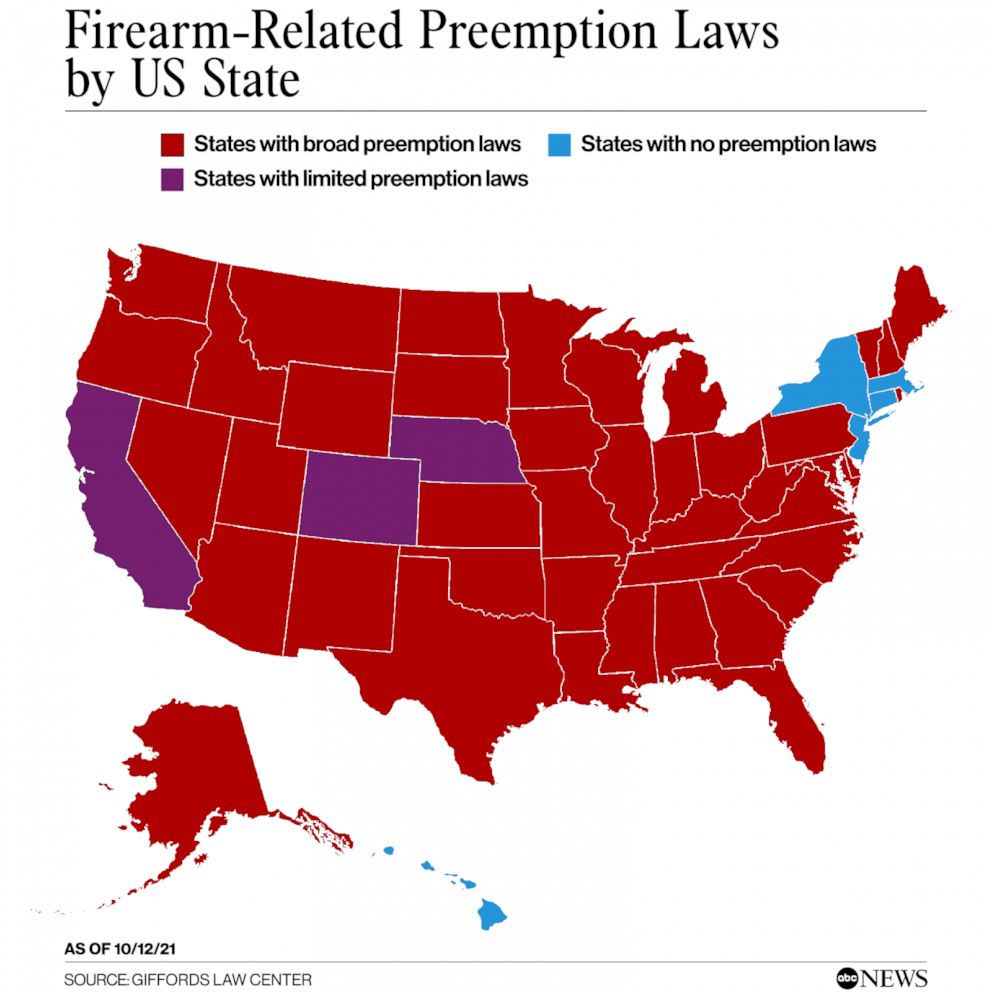
After the National Rifle Association formed its own political action committee in 1977, it began targeting state legislatures with the preemption model and found it was a more effective way to bolster the rights of gun owners than going through Congress.
The effort picked up momentum when a challenge, on Second Amendment grounds, to a local ordinance in Illinois banning handgun ownership failed in 1982 -- years ahead of the 2008 Heller decision. So, he said, the NRA raised the specter of Quilici v. Village of Morton Grove to lobby for preemption laws in order to lessen local governments' abilities to regulate guns in the first place.
In 1979, two states in the U.S. had full preemption and five states had partial preemption laws. By 1989, 18 states had full preemption laws and three had partial, according to Kristin Goss in her book "Disarmed: The Missing Movement for Gun Control in America."
MORE: Ex-NRA insider speaks out: Gun owners should be 'horrified' by what I saw
"There's been a concerted effort by gun rights organizations to enact gun-friendly legislation in the states. And they do so using the rhetoric of the Second Amendment, even though nothing about the Second Amendment necessarily requires the state to pass such legislation," said Darrell Miller, another expert on gun law at Duke University School of Law.
While a densely populated area with a high crime rate may want to enact stricter gun policies not necessarily suited for other areas in a state, preemption laws restrict local governments from doing so.
For example, in Colorado, a preemption law had prevented cities and municipalities from passing gun regulation measures. Boulder tried to ban semi-automatic weapons in 2018 after a gunman with an AR-15-style rifle opened fire at a high school in Parkland, Florida, leaving 17 dead and surpassing the Columbine High School shooting as the deadliest high school shooting in American history.
There's been a concerted effort by gun rights organizations to enact gun-friendly legislation in the states. And they do so using the rhetoric of the Second Amendment, even though nothing about the Second Amendment necessarily requires the state to pass such legislation.
But a state court struck down the ban on March 12 of this year -- 10 days before a 21-year-old man with a semi-automatic Ruger AR-556 pistol killed 10 people at a King Soopers grocery store in Boulder. The judge's decision did not hang on the Second Amendment but rather a violation of Colorado's preemption law.
MORE: 20 years after Columbine, what's changed -- and what hasn't -- for school shootings in America
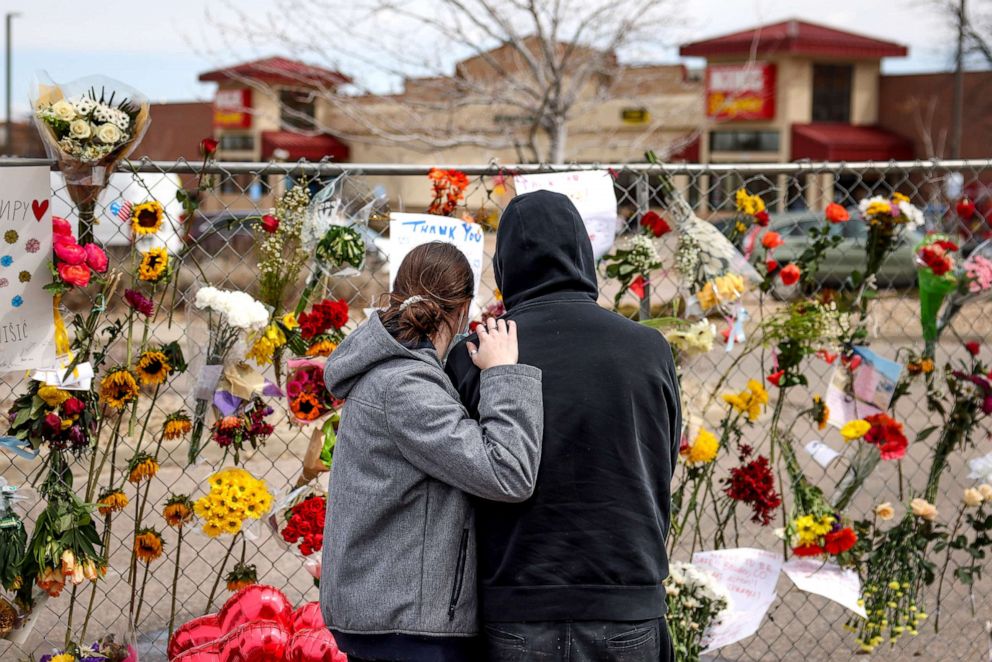
Colorado in June became the first state to repeal its preemption law -- a move gun-regulation activists such as those at the Giffords Law Center to Prevent Gun Violence have hailed as a reflection of what voters want. More than half of Americans support more gun regulation, according to data from recent surveys by Pew Research Center and Gallup.
There's also the presence of "permitless carry regimes," said Jake Charles, another gun law expert at Duke University, which is when legislatures interpret the Second Amendment as giving individuals the right to bear arms in public without a permit, an interpretation the Supreme Court has not made.
MORE: The type of gun used in most US homicides is not an AR-15
In all 50 states, it is legal to carry a concealed handgun in public, subject to varying restrictions depending on the state, but at least 20 do not require permits for either open or concealed carry of firearms, with Texas becoming the latest to enact what advocates call "constitutional carry."
Permitless or "constitutional carry" is not something the Supreme Court's reading of the Second Amendment currently calls for.
Experts say that could change.
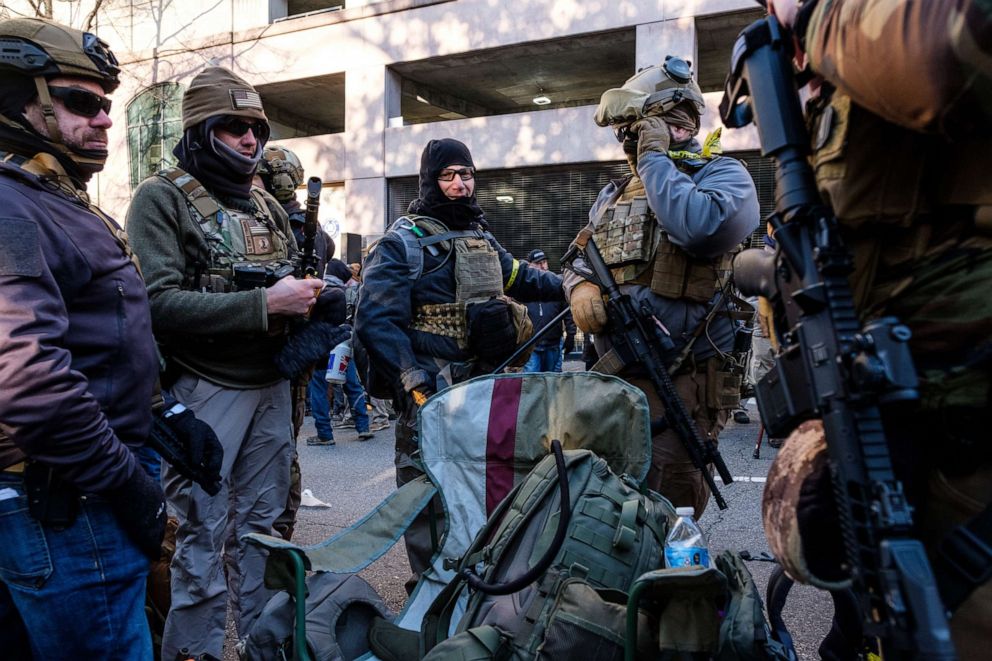
In New York state, a person is currently required to prove a special need for self-protection outside the home to receive a permit to carry a concealed firearm. A challenge to the constitutionality of a "may-issue" permit law, New York State Rifle & Pistol Association Inc. v. Corlett , will be heard by the Supreme Court this fall -- the court's first major case on guns in a decade, coming as the makeup of the court swings right due to three appointments from former President Donald Trump.
"There are about half a dozen states which have laws similar to New York's, so if the court strikes it down, we can expect to see challenges to those states' laws in short order," Blocher said.
The partisan debate continues
Allison Anderman, senior counsel at the Giffords Law Center to Prevent Gun Violence, stressed that, in part because of the influence of state statutes, the Second Amendment should not be a barrier to gun regulation .
She also said that because the Second Amendment's political definition is entrenched in the true, judicial one, the debate surrounding it gets muddied up and the passion is, perhaps, misplaced.
MORE: People hoping to protect kids from accidental gun injuries, deaths push for stronger safety laws
"It's a rallying cry. It's easy. It's a sound bite," she said. "But the Second Amendment gets thrown around politically in a way that's not based in law."
It's a rallying cry. It's easy. It's a sound bite.
Blocher agreed and argued the Second Amendment debate is among the most partisan in the nation.
"The gun debate has gone far beyond judicial interpretations of the Second Amendment and these days has much more to do with personal, political and partisan identity," he said.
Related Topics
- Gun Violence

Smith responds to judge's order in Trump docs case
- Apr 3, 1:11 AM

'Suspicious': Search underway for 2 women
- Apr 2, 7:16 PM
ABC News Live
24/7 coverage of breaking news and live events
Restructuring the Gun Control Conversation
In the US, the gun control conversation feels set in stone. We’ve fallen into a pattern: inevitably, a high-profile gun death leads to an outcry from the pro-gun-control crowd, to which anti-gun-control advocates respond with an amendment that’s existed since 1791. Partisan gridlock and interest group funding has made it hard to pass national legislation on guns, but our conversations share part of the blame. For as long as I can remember, arguments regarding gun control have relied on the same statistics, laws, talking points, and stories. These stale discussions seem unable to make a dent in the American gun violence epidemic–so what should we be talking about? For more productive discussions (and hopefully, solutions) I propose we make the following three changes to our conversations about guns in America.
Change 1: Talk about shooting rates, not gun-related death rates
The most common measure of harm done by guns is the number of gun deaths in a given year or area. This is the number most people are familiar with, the number that identifies cities or neighborhoods as most dangerous, and the number that tracks how gun violence changes over time.
Yet there is a glaring problem with measuring gun violence by fatalities: medical care influences which gunshot victims live or die. For example, while data on this subject is hard to find, one study found that only ⅓ of gunshot wounds were fatal [1]. This skews our perception of gun violence in several ways.
Before exploring how our understanding is skewed, I must acknowledge that it is hard to draw reliable quantitative answers to these questions. This is part of the problem. Gun-related deaths are tracked, reported, and compiled into reports; it is much harder to find statistics on gun violence or medical care for victims. Shifting the conversation toward gun violence rather than gun deaths could lead to more data on the true degree of gun violence in America today.
That being said, based on other medical advancements, it’s reasonable to assume that doctors’ ability to treat gun wounds has improved in the last 50 years. Thus, changes in gun deaths over that time may not reflect any meaningful change in the amount or severity of gun violence; it may instead reflect more people recovering from what would have once been fatal.
Second, because the quality and accessibility of medical care varies dramatically by community [2], communities with similar amounts of gun violence may have different amounts of gun-related deaths. This may lead us to think gun violence is worse in one city/neighborhood/group than in another, simply because people who get shot in one community get to a top-tier hospital quickly, while people who get shot in the other community die on the commute or on the operating table.
Finally, because US hospitals have the experience and equipment to handle gunshot wounds, comparing our country’s gun-related death rates to global death rates might not tell the full story. The US has more gun deaths per capita than other high-income countries [3], but there are several developing countries whose rates are even higher than ours. How might this statistic change if their medical care was as advanced as ours? How would our rates of gun-related crimes, injuries, or hospitalizations compare to those in developing countries?
Change 2: Broaden the focus beyond mass shootings
Mass shootings are terrible tragedies, and Americans are getting far too used to hearing about them in the news. However, compared to other forms of gun violence, they are uncommon. Because of their brutality, mass shootings leave a disproportionate impact on the national consciousness, but their victims account for only a fraction of the gun violence in America. According to the Pew Research Center, 48,830 Americans were killed with guns in 2021. If a mass shooting event is defined as an incident where four or more people are shot, there were 61 in 2021 (the most ever recorded in one year), leading to 706 deaths. By comparison, there were 26,328 gun-related suicides and 20,958 gun-related murders [4].
America has to find a solution for the ballooning number of mass shootings, but we also need to find a solution for gun violence in general. Proposed solutions for mass shootings (such as limiting access to automatic or semi-automatic weapons or arming teachers in schools) will make no dent in the tens of thousands of lives taken by suicide, domestic violence, or gang violence. These shooters tend to use different weapons and have different motivations than the mass shooters we hear so much about, and our gun control policies need to account for them. Focusing our gun control conversation on the most prevalent types of violence is the first step to those improved policies.
Change 3: Examine the racial implications of gun laws
As this article makes clear, I believe gun violence is more widespread than our gun fatality numbers report and more commonplace than our focus on rare mass shootings leads us to believe. In general, I want solutions to this crisis and I am personally in support of more gun control. However, as we propose and debate gun control legislation, we often fail to consider how the laws will be implemented. In particular, we ignore the effects implementing gun laws may have on people of color.
In practice, a ban on possessing a certain type of weapon is a ban on having that weapon in your possession when you are searched by authorities. Yet, as is common knowledge that minorities–particularly Black and Hispanic men–are pulled over or investigated by authorities at much higher rates than other people. One study found that Black people were blacks were about 95 percent more likely than white people to be stopped by police officers while driving and 115 percent more likely to be searched [5]. If laws are written and enforced incorrectly, the war on guns might end up having a similar effect as the “War on Drugs”, making illegal gun possession a party trick among rich white kids and a hefty prison sentence for young black men.
This effect is already observed with the gun laws in place today. The Harvard Law Review cites this sobering statistic: “seventy percent of all defendants convicted of federal firearms offenses were minorities” [6]. While the prevalence of gun violence among minority communities warrants discussion, it is beyond the scope of this article. this statistic certainly does not mean that seventy percent of all people violating gun control laws were minorities. Instead, it shows that law enforcement is already over-policing minority communities, and we have no reason to believe this practice would stop if we created harsher gun control measures.
Above all, the American gun violence epidemic cannot be left unchecked. Something has to break the stalemate that has permitted hundreds of thousands of people to die, and I hope that changes like these will pave the way, clarifying our understanding of the status quo so we can finally change it.
[1] https://www.pennmedicine.org/news/news-releases/2020/december/study-shows-329-people-are-injured-by-firearms-in-us-each-day-but-for-every-death-two-survive [2] https://www.ncbi.nlm.nih.gov/pmc/articles/PMC2728684/ [3] https://wisevoter.com/country-rankings/gun-deaths-by-country/ [4] https://www.pewresearch.org/short-reads/2023/04/26/what-the-data-says-about-gun-deaths-in-the-u-s/ [5] https://sc.edu/uofsc/posts/2020/06/racial_disparities_traffic_stops.php#:~:text=Taking%20into%20account%20less%20time,in%20searches%20of%20white%20drivers . [6] https://harvardlawreview.org/forum/vol-135/racist-gun-laws-and-the-second-amendment/
An official website of the United States government
The .gov means it’s official. Federal government websites often end in .gov or .mil. Before sharing sensitive information, make sure you’re on a federal government site.
The site is secure. The https:// ensures that you are connecting to the official website and that any information you provide is encrypted and transmitted securely.
- Publications
- Account settings
Preview improvements coming to the PMC website in October 2024. Learn More or Try it out now .
- Advanced Search
- Journal List
- Clin Orthop Relat Res
- v.471(12); 2013 Dec

Debate: Gun Control in the United States
Michael boylan.
Marymount University, Arlington, VA USA
Don B. Kates
The Independent Institute, Oakland, CA USA
Ronald W. Lindsey
Department of Orthopaedic Surgery and Rehabilitation, University of Texas Medical Branch, 301 University Blvd., Galveston, TX 77555-0165 USA
Zbigniew Gugala
The issue of gun control in the United States generates heated and passionate debate whenever it comes up. To provide a brief glimpse into the wide spectrum of opinions on this topic, the symposium’s guest editors have invited two prominent and opposing voices on this subject. Michael Boylan PhD is Professor and Chair of Philosophy at Marymount University in Arlington, VA, and has been a staunch advocate for more stringent gun control. Don Kates JD is a retired professor of constitutional and criminal law, criminologist, and research fellow with The Independent Institute in Oakland, CA. Kates has fervently argued against firearm regulation. As you will appreciate, both contributors provide rational support for their positions with little common ground. We believe that the absence of common ground here is, in fact, part of the problem. If we are to have any chance of solving the problems of civilians maiming and killing other civilians with firearms, individuals on both sides of the gun-control debate — as well as those in the broad, moderate middle — will need to see the issue as complicated, nuanced, and, for many, laden with emotion. It is our sincerest hope that even those on the extremes begin to look for areas of agreement, and use those areas as a point of departure for sensible approaches to minimize the dreadful harm that gunshot injuries cause.
Although this is the first CORR ® forum to focus on the social, as opposed to the scientific or clinical aspects of gunshot injury, its relevance for the clinician is no less crucial. The social decisions we make or fail to make today will not simply affect our patients, but will also affect our neighbors, friends, and families.
Zbigniew Gugala MD, PhD and Ronald W. Lindsey MD: Why is gun possession a greater problem in the United States than in other developed countries?
Michael Boylan PhD: Gun possession by ordinary citizens of the world is a potential threat to public health. This is a result of the damage coefficient that guns possess. When anger is combined with ready access to high-damage coefficient weapons, the concern is that the expression of that anger could be fatal. The real problem with guns is the potential damage that they can inflict [ 16 ].
Don B. Kates JD: Yes, some small European nations that severely restrict guns have lower murder rates than the United States, but their minimal populations make them noncomparable. Russia, a more comparable country, banned handguns in the 1920s, yet Russian murder rates have always exceeded the United States. As of the year 2000, Russian murder rates were four times higher than the United States [ 12 ].
Admittedly, murder is somewhat lower in various handgun-banning former Russian nations. Their murder rates are only thrice that of the United States [ 15 ]. The murder rates of European nations that liberally allow guns like France, Germany, Austria, and Italy are much lower than that of the United States, and one-third of the rates for gun-restrictive European nations. Norway, with the highest gun ownership in Europe, has Europe’s lowest murder rates; Austrians, whose law guarantees a right to handguns, have Europe’s second lowest European murder rate [ 12 ].
What about England? In 1900, England had no gun laws and the lowest murder rate in Europe. Since 1920, England has adopted more stringent gun restrictions until 1997 when handguns were banned completely [ 7 ]. Under these progressive restrictions, English violence progressively increased. Today, England has the highest violent crime rates in Europe (except for Russia) [ 7 ].
Drs. Gugala and Lindsey: Should citizens have the right to bear arms?
Dr. Kates: There are no studies supporting the fear that gun ownership would increase the likelihood of ordinary, law-abiding citizens to commit murder. Rather, studies suggest [ 13 ] that individuals who are likely to commit murder, do so in the course of long criminal careers consisting primarily of nonviolent crimes, but including larger than normal (for other criminals) proportions of violent crimes. Studies dating back to the 1890s invariably show virtually all murderers have lifelong criminal records [ 6 ].
Who is trustworthy with arms? Most Americans accept the view underlying the Second Amendment set out by Thomas Paine: “Arms discourage and keep the invader and plunderer in awe, and preserve order in the world as well as property…Horrid mischief would ensue were the law-abiding deprived of the use of them.” [ 17 ].
Every state has passed laws exonerating police from liability for nonprotection. According to the State of California’s Government Tort Liability Act, the government and its officers are not liable for injury caused by failure to enforce any enactment [ 2 , 11 ]; failure to provide police protection or to provide sufficient police protection [ 3 , 11 ]; failure to make an arrest, or the failure to retain an arrested person in custody [ 4 , 11 ]. All other states’ laws concur [ 15 ].
While armed criminals commit thousands of crimes per year, armed citizens foil many of those crimes [ 9 ]. According to a study by Kopel and colleagues, “firearms are used over half a million times a year against home invasion burglars; usually the burglar flees as soon as he finds out that the victim is armed, and no shot is ever fired.” [ 14 ].
When victims draw guns, criminals almost always flee. For criminals, gunfights are a losing proposition. Their victims are hospitalized with an 85% recovery rate [ 19 ]; but criminals shot by victims face a “Hobson’s choice”: hospitalization with imprisonment or eschewing medical care at the risk of death. A criminological study [ 18 ] found that for those attacked by criminals “resistance with a gun appears to be the most effective [response] in preventing serious injury [to victims, and] for preventing property.” The same study also noted that “the use of a gun by the victim significantly reduces her chance of being injured.” [ 18 ]. A U.S. National Crime Victimization study [ 9 ] concluded that defending against felons with a gun helps victims 65% of the time and make things worse only in about 9% of the time.
Dr. Boylan: It is surely time for our country to have a serious discussion about gun control. One of the problems with instigating such a discussion is the fixation on “the right to bear arms” clause in the Bill of Rights. However, I think that this should not be the focus of discussion; instead we should examine the human rights claim that people make to justify their owning a gun, and limit the discussion to the most pernicious claim: the category of self-defense. Protection from unwarranted bodily harm is a basic right that we all can claim, and law-abiding citizens should be able to possess a weapon appropriate to that end. But what sort of weapon? [ 1 ] There are two important concepts that can assist in making this determination: the weapon damage coefficient, and the minimum force necessary to produce a result [ 1 ].
Victims of injuries suffered from weapons with a low-damage coefficient (small percussive objects like sticks, bottles, glasses) typically incur less severe injuries, and have a very high recovery rate [ 1 ]. Knife wounds and larger percussive objects (thick bottles, bats, and chairs) are next in terms of increasing weapon damage coefficient. The weapon damage coefficient of firearms makes a quantum jump in severity and death, and permanent injury rates are significantly higher [ 1 ].
Weapons and weapon damage coefficient exist on a continuum. Logically, there must be a control somewhere. The only question is where on this continuum of armaments do we begin banning weapons [ 1 ]?
Drs. Gugala and Lindsey: Do strict gun laws decrease the incidence of violent crimes or accidents?
Dr. Boylan: Because of the Federal ban on gathering data within the United States on the relationship between gun possession and public health [only recently lifted], it is difficult to say with certainty. It is true that countries like Great Britain and Japan have very strict laws on gun ownership (including the police). In those countries, there are statistically significantly fewer deaths by gunshot than in the United States (even stated in proportional terms). It certainly makes intuitive sense to me that if there are fewer guns in a society, then there will be fewer shootings and fewer fatalities.
Dr. Kates: In the early 2000s, the CDC and the National Academy of Sciences evaluated the value of gun laws. After reviewing 253 journal articles, 99 books, 43 government publications and some empirical research of its own about gun crime [ 11 , 16 ], the National Academy of Science could not identify any gun restriction that reduced violent crime, suicide, or gun accidents [ 16 ]. In 2004, the CDC (which vehemently endorses gun bans), released its exhaustive review of the extant literature [ 5 ]. The CDC could not identify any evidence that gun control (including Washington D.C.’s complete handgun ban) — had reduced murder, violent crime, suicide, or gun accidents [ 5 ].
Drs. Gugala and Lindsey: If enacted, can strict gun control laws be enforced?
Dr. Kates: It is safe to assume that most law-abiding gun owners would not comply with a firearms ban. That is verified by actual behavior. Despite often ferocious penalties, gun owners will not register their firearms because they fear this paves the way for eventual confiscation. In his book, [ 10 ] Prof. James B. Jacobs, Director of the Center for Research in Crime and Justice at New York University School of Law, noted that efforts to ban or register assault weapons are overwhelmingly ignored. In Boston and Cleveland, the rate of compliance is estimated at 1%. Out of the 100,000 to 300,000 assault rifles estimated to be in private hands in New Jersey, 947 were registered, an additional 888 rendered inoperable, and four turned over to authorities. In California, nearly 90% of the approximately 300,000 assault weapon owners did not register their weapons [ 8 ].
Dr. Boylan: Enforcement will not be easy. However, one should not reject a piece of legislation (such as sensible gun control) because it is difficult to enforce. Rather, the question should be whether it is the right thing to do. If we had let enforcement worries rule our legislative agenda, then we would have never passed the 1964 Civil Rights Law or the 1965 Voting Rights Acts. These important pieces of legislation were morally necessary. We have made great strides as a country in recognizing the force of these laws after almost 50 years. The first priority of a responsible government is doing what is morally right. Civil law only has true authority when it is backed up by an ethically defensible system. The Nuremberg Laws reinforced these natural law pronouncements. This should be our driving vehicle for public policy in all areas.
Note from the Editor-in-Chief: Most of this symposium on gunshot injuries focuses on clinical research related to the treatment of patients wounded by firearms. However, the symposium’s guest editors believe, and I agree, that gunshot violence has a critical social component, and that any symposium on the topic needs to address this directly. We therefore are pleased to share this debate between two non-surgeon experts on the contentious issue of gun control.
The authors certify that they, or any members of their immediate families, have any commercial associations (eg, consultancies, stock ownership, equity interest, patent/licensing arrangements, etc) that might pose a conflict of interest in connection with the submitted article.
All ICMJE Conflict of Interest Forms for authors and Clinical Orthopaedics and Related Research ® editors and board members are on file with the publication and can be viewed on request.
The opinions expressed are those of the guest editors’ invited experts, and do not reflect the opinion or policy of CORR ® or the Association of Bone and Joint Surgeons ® .
Why The Arguments Against Gun Control Are Wrong

President, www.citizenstakeaction.org
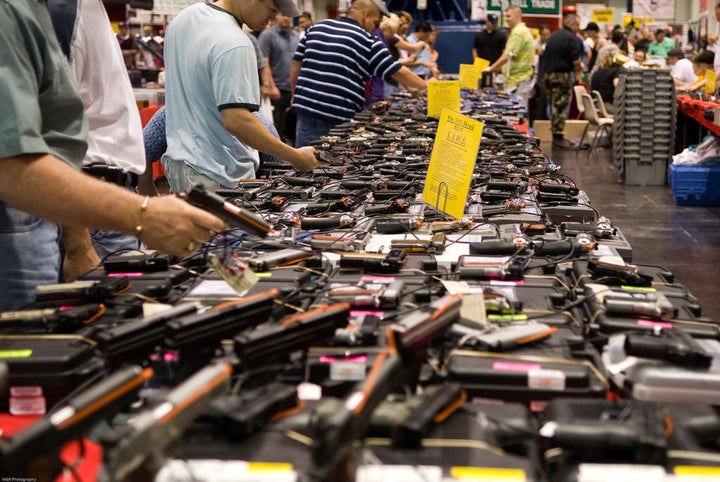
Houston Gun show at the George R. Brown Convention Center
This week at least 59 people were killed and over 500 injured in the deadliest mass shooting in American history. Naturally, the gun control debate — the same one we have been having for decades — has ramped up again, and opponents are using redundant, deeply flawed arguments against even modest proposals like more background checks or a federal database to track gun sales.
Given the current composition of Congress and the over $60 million from the NRA that helped create it , the chances for rapid reform are slim. But that doesn’t mean that the debate should end. Shoddy arguments should be exposed and people who make them should be challenged. To that end, below are five of the most common arguments against gun control, and why those arguments are wrong.
1. Gun Control Violates The Second Amendment
Many opponents of gun control argue that limits on gun ownership are unconstitutional because they violate the Second Amendment, which includes the phrase “the right of the people to keep and bear Arms, shall not be infringed.” Opponents often emphasize the “shall not be infringed” part while ignoring the other clause about the right being connected to a “well regulated Militia,” but nobody’s perfect. Even emphasizing the “right” component, however, if we slow down and think about what an absolute right to bear arms would look like, it’s clear that even the people making the argument don’t believe in it.
If the right to bear arms cannot be infringed, mentally ill felons can own nuclear weapons. Children can own machine guns. Terrorists can bring hand grenades on airplanes, right? Because the right to bear arms shall not be infringed .
Since nobody who buys into the concept of society actually believes that, it’s clear that everybody believes in some level of gun control, including conservative courts that have allowed assault weapons bans, background checks, and other limits on gun ownership to stand for years. So the clear consensus among ordinary Americans and constitutional law scholars is that the type of gun control being proposed today does not violate the Second Amendment.
Slightly more reasonable people may concede that point and argue that Americans at least have a right to own military grade weapons, claiming that the Founding Fathers intended as much. But the truth is that we have no way of knowing what men who lived in the era of muskets would think of assault rifles. Anyone who says otherwise is some combination of insincere or foolish.
2. Gun Control Doesn’t Work
The two primary prongs of the “gun control doesn’t work” argument are that: 1) gun control does not reduce gun deaths largely because 2) it does not actually make it more difficult for people to obtain guns.
One fundamental problem with this argument is that gun control can mean a number of different things: more stringent background checks, bans on high capacity magazines, licensing requirements, etc. So making the general statement “gun control doesn’t work” without referencing a specific proposal is kind of like saying “this food tastes bad” before know what’s on the menu.
To be fair, both sides of this argument can always find evidence to support their position. Gun control advocates can point to Australia , where both suicide and murder rates plummeted after a national gun buyback of over 650,000 guns in 1996 and 1997. On the other hand, opponents can correctly state that Chicago has strict gun laws but an alarmingly high rate of firearm related deaths. Anyone can cherry-pick a city, state, or country to support their argument, which is why we need a larger sample size.
Luckily, we have a few large samples. One is called the United States. Another is called Earth. And both large samples establish a consistent correlation: places with more guns generally have more gun deaths than places with fewer guns . It’s not always true. But it’s usually true. And if something usually works, it seems foolish not to try it in this country, especially in light of our absurd level of gun ownership—we have 4.4 percent of the world’s population, but 42 percent of civilian owned guns.
As for the argument that gun control won’t make it more difficult for people to obtain guns, Ronald Reagan addresses that pretty well in the letter he signed supporting an assault weapons ban, stating that,
“While we recognize that assault weapon legislation will not stop all assault weapon crime, statistics prove that we can dry up the supply of these guns, making them less accessible to criminals. We urge you to listen to the American public and to the law enforcement community and support a ban on the further manufacture of these weapons.”
That’s right gun control opponents. Even Ronald Reagan disagrees with you.
3. People Are The Problem and They Will Harm Others Without Guns
In my opinion, it’s a reflection of poor parenting or a subpar education system, but an alarming number of Americans actually argue that banning assault weapons is pointless because without them, criminals would just use knives or cars—as if a society without weapons of any kind would be equally dangerous to ours. For those who do think that, let’s concede that people killed people before guns and will continue to do so even if the supply of guns diminishes. Everyone agrees.
But the key element here is that guns make it a lot easier to kill someone than knives or cars. And it seems fairly obvious that making it more difficult to kill someone is a good thing since it may lead to some life-saving contemplation or a victim who has time to escape unscathed or with less severe injuries. Lastly, gun control doesn’t have to eliminate violence to be successful. A reduction in violence is still a success.
4. But I Need Guns For Protection From Criminals And The Government
First, contrary to what the NRA has led many to believe, gun control does not mean abolishing the Second Amendment or taking away all guns. Doing so would not only be unpopular, but politically and logistically impossible. We are talking about limits, not abolition. So the relevant question is not whether guns can be used for protection because of course they can. What matters is whether we can place some limits on gun ownership—like on certain types of guns or a total number of guns—while allowing Americans to protect themselves against criminals. The evidence indicates that we can.
Take assault weapons for starters. Despite the attention they get due to mass shootings, assault weapons are not a leading killer of innocent Americans. They account for only a small fraction of gun-related deaths—about one or two hundred a year out of over 10,000. Nonetheless, it is undeniable that every year people are killed by assault weapons who would not have died if the perpetrator had a gun without “military style” features. By contrast, there is little evidence that assault weapons are ever essential for self-defense.
Don’t get me wrong, assault weapons can be used for self-defense and they occasionally are. But it is difficult to find documented incidents in which an assault weapon was successfully used for self-defense by a civilian when a lesser gun would not have sufficed. On balance, it appears that assault weapons are far more frequently used for assault than for protection.
There is a similar lack of evidence that owing, say, eight guns, is necessary for protection. If that number sounds absurdly high, it isn’t— the average gun owning household in American has more than eight guns . If that many guns are essential for protection, we should be able to find studies or verified stories that prove it—“My first seven guns jammed but I was able to shoot the intruder with my eighth. Thank God I had eight guns!” Without such cases, it seems as though limiting individuals to say, three guns per person, would still give Americans the same level of “protection” they have today.
Lastly, as to the argument that guns are necessary to for protection from government tyranny, as noted above, gun control does not mean taking away all guns. But more importantly, if there were some unprecedented battle of government versus civilians, what good would guns, even assault weapons do, against the United states military? The military has tanks, drones, aircraft carriers, missiles, cyber warfare capabilities, far-reaching surveillance, and more. In the arms race between government and civilians, civilians lost years ago. Background checks, a federal database tracking gun sales, or a ban on high capacity magazines are not going to change the equation.
5. The Only Thing That Stops A Bad Guy With A Gun Is A Good Guy With A Gun
There is no dispute that law enforcement officers and sometimes even civilians use guns to stop bad people with guns. But once again, the question is not whether a gun can be used for good; the question is whether the protection guns provide equals or outweighs the danger. Polls show that a majority of people believe owning a gun makes them safer, but the available evidence indicates otherwise.
FBI data as recently as 2014 showed that almost eight times as many people were killed by guns in arguments than by civilians using a gun in self-defense. Multiple surveys, including the National Crime Victimization Survey, show that guns are used to commit crimes about ten times more often than they are used to stop a crime. And an analysis of hundreds of shootings in Philadelphia found that people carrying firearms were about 4.5 times more likely to be shot than those not carrying , likely due to unnecessary conflict escalation. So on balance, guns make situations more dangerous, not less.
When broken down in detail, the most common arguments against gun control share similar traits. They are based on cherry picked evidence, hypothetical situations that don’t happen in reality, or flawed reasoning. Facts and logic both support the idea that limiting the supply of guns and access to them generally makes people safer. Facts and the logic may not gain you much ground with opponents these days, but just like sensible limits on gun ownership, it’s worth a try.
Support HuffPost
Our 2024 coverage needs you, your loyalty means the world to us.
At HuffPost, we believe that everyone needs high-quality journalism, but we understand that not everyone can afford to pay for expensive news subscriptions. That is why we are committed to providing deeply reported, carefully fact-checked news that is freely accessible to everyone.
Whether you come to HuffPost for updates on the 2024 presidential race, hard-hitting investigations into critical issues facing our country today, or trending stories that make you laugh, we appreciate you. The truth is, news costs money to produce, and we are proud that we have never put our stories behind an expensive paywall.
Would you join us to help keep our stories free for all? Your contribution of as little as $2 will go a long way.
As Americans head to the polls in 2024, the very future of our country is at stake. At HuffPost, we believe that a free press is critical to creating well-informed voters. That's why our journalism is free for everyone, even though other newsrooms retreat behind expensive paywalls.
Our journalists will continue to cover the twists and turns during this historic presidential election. With your help, we'll bring you hard-hitting investigations, well-researched analysis and timely takes you can't find elsewhere. Reporting in this current political climate is a responsibility we do not take lightly, and we thank you for your support.
Contribute as little as $2 to keep our news free for all.
Dear HuffPost Reader
Thank you for your past contribution to HuffPost. We are sincerely grateful for readers like you who help us ensure that we can keep our journalism free for everyone.
The stakes are high this year, and our 2024 coverage could use continued support. Would you consider becoming a regular HuffPost contributor?
The stakes are high this year, and our 2024 coverage could use continued support. If circumstances have changed since you last contributed, we hope you’ll consider contributing to HuffPost once more.
Already contributed? Log in to hide these messages.
Popular in the Community
From our partner, more in politics.
The only newsroom dedicated to covering gun violence.
Bang for the buck, the gun groups scrambling to fill the nra’s void.
As the organization's social, political, and financial dominance in the gun rights arena wanes, other prominent groups are influencing the movement in newfound ways.
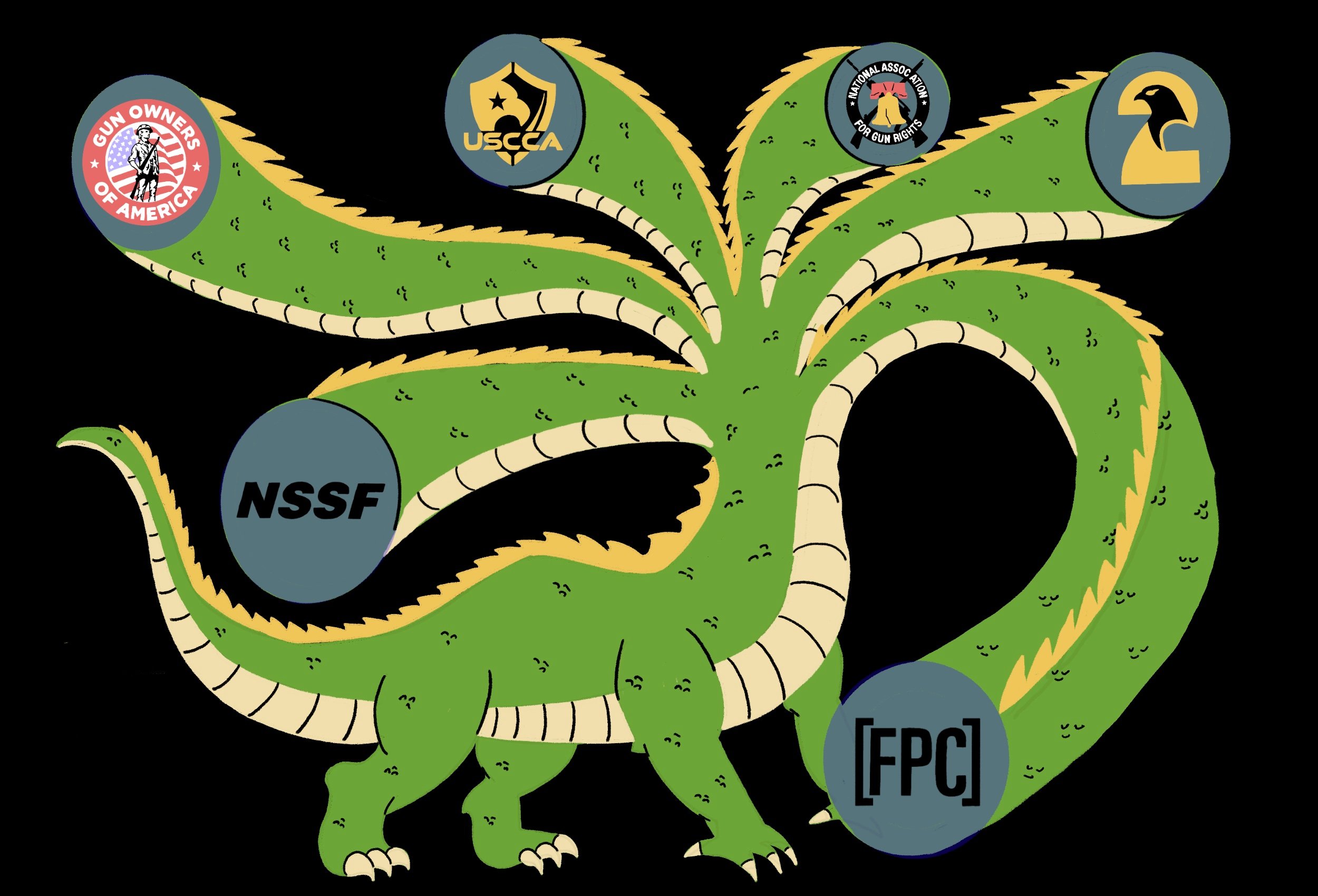
Go beyond the headlines.
Your weekly briefing on gun violence..
- Share on Twitter
- Share on Facebook
- Email a link to this page
The National Rifle Association is weakened. Last month, after years of revenue and membership declines , the group and its longtime boss and fundraising talisman Wayne LaPierre were found liable in a civil corruption case. Although LaPierre resigned on the eve of trial, jurors ruled that his misconduct had been egregious enough to warrant removal.
The NRA still has no equal in the gun rights movement. Its revenue of $211 million in 2022, the last year for which figures are available, far surpasses the sums that other gun groups have historically collected, but nonetheless marked a continued contraction.
The gun rights movement, however, has always been bigger than the NRA. Today, it continues to advance, as the spread of permitless carry to a majority of states demonstrates. While the movement and its leadership remain largely white and male, smaller groups for Black, Latino, LGBTQ, liberal, and women gun owners have channeled press attention to the movement’s diversity. An array of larger, national organizations has moved in to fill the void created by the NRA’s collapse. To an extent, these groups have benefited from disaffected NRA members joining their ranks, but their growth is also linked to the greater popularity of personal defense carry and a hardening of the movement’s more radical, explicitly anti-government flank.
Here are some of the more notable gun interest groups on the rise.

Name: United States Concealed Carry Association
Focus: personal defense liability insurance and firearms training, leader: tim schmidt, annual revenues in 2022: unknown (ussca is privately held).
This Wisconsin-based group, founded in 2003, gained ground by pitching itself as relatively apolitical. Rather than fulminating in the style of the NRA, the USCCA has stressed the necessity of armed personal defense, and celebrated carrying a gun as an act of love for one’s family. Members get insurance to cover legal costs that may arise from the lawful use of a gun.
The editor of the association’s magazine told NPR in 2019 that 40 percent of members identified as Democrats. “We are not divisive; we are not exclusive,” he said. “We want everyone who wants to defend themselves to be part of this organization and to learn from us.” (The group did not respond to a request for more current estimates.) At the time of the report, the group had over 300,000 members, and founder Tim Schmidt said that he was focused on reaching 1 million. The organization appears to be nearing that mark. During the pandemic gun buying surge, it saw rapid growth and now reports over 800,000 members.
USCCA revenue figures are not public. But it’s clear that the model is potentially lucrative. The cost of the middle-tier annual membership multiplied by 800,000 is nearly $320 million. If that figure is anywhere near accurate, revenue in recent years well exceeds the NRA’s.
The group has expanded lately in ways that may strain its relatively nonpartisan brand. In 2021, the USCCA created a political action committee that collected $2.5 million through the 2022 election cycle. And in September of 2023, it formed a nonprofit advocacy arm .

Name: Second Amendment Foundation
Focus: litigation, leader: alan gottlieb, annual revenues in 2022: $6.8 million.
The Washington State-based SAF was founded by Alan Gottlieb in 1974. Active in national conservative circles since the 1970s, Gottlieb is known for direct-mail and marketing savvy, and for cashing in on conservative causes through a network of private companies that have business arrangements with his advocacy groups. (The state Attorney General’s Office in Washington is investigating Gottlieb, who maintains that the inquiry is politically motivated.)
The foundation is a singular force in Second Amendment litigation, challenging gun laws nationwide at a clip that far surpasses other gun groups. Since 2018, the SAF has initiated at least 75 gun rights lawsuits in federal district courts. The NRA has filed 30 federal actions in the same period, a publicly accessible case catalog indicates, but they overwhelmingly involved business and regulatory disputes.
As The Trace reported in 2022, Gottlieb allowed a dissident NRA board member to use an advocacy group he’d founded as a fundraising arm in a campaign to overhaul NRA leadership.
One dividing line in the gun rights movement is between those who recognize the legitimacy of the federal Bureau of Alcohol, Tobacco, Firearms and Explosives, and those who seek its demise. The SAF straddles this divide. Its lobbying arm, the Citizens Committee for the Right to Keep and Bear Arms, has long employed Mark Barnes, a lobbyist with unparalleled access at the ATF. It also publishes anti-agency polemics with headlines like, “ A warning to ATF: We will never forget your crimes .”
The SAF has seen revenue increase from $4.8 million to $6.8 million from 2018 to 2022.

Name: Firearms Policy Coalition
Leader: brandon combs, annual revenues in 2022: $5.3 million.
Alan Gottlieb helped establish the Firearms Policy Coalition in 2013, with the goal of creating a new generation of gun rights warriors. A frequent SAF partner and co-plaintiff, the FPC’s revenue leapt from $651,000 in 2018 to $5.3 million in 2022. Include a related foundation’s revenue and the 2022 figure is $7.4 million. It is strident, even by gun world standards, and deeply libertarian.
Unlike the NRA and other legacy gun rights groups, the coalition does not venerate law enforcement. It is skeptical of government power. In its literature and on social media, the group emphasizes the primacy of natural rights, including what it insists is the essentially inviolable right to bear arms in self-defense. The coalition does not see democracy as an end ; it’s merely one means by which populations organize themselves. And it’s a flawed strategy because, in a democracy, some must forgo a measure of liberty in the interest of collective self-government.
On the FPC website, you can purchase a coalition-branded ‘Abolish the ATF’ T-shirt, or if you prefer, one that declares, ‘Stack Up or Fuck Off,’ a frequent coalition riposte on social media. The phrase is an earthier variant of “Come and Take Them,” a dated gun rights slogan.
This overview omits state groups . While often modest in size and income, these groups have been the movement’s vanguard, outflanking the NRA and driving state and local legislative action. As the NRA has shrunk, many state gun rights organizations have held steady or grown revenue. Some are NRA affiliates, some independent. The California Rifle & Pistol Association, an NRA state group, saw its revenue go from $1.9 million in 2018 to $2.6 million in 2022.
We’ve also omitted a bunch of smaller affinity groups . The Liberal Gun Club, Latino Rifle Association, and The Pink Pistols, which has an LGBTQ focus, have all been the subject of media reports about the evolution of the movement. None has seen growth like the National African American Gun Association. Its revenue went from $45,000 in 2019 to $700,000 in 2022. Like the state groups, the relatively modest size of these organizations may belie their significance. They attract people wary of legacy groups and serve as evidence of the cause crossing identity borders.

Name: National Shootings Sports Foundation
Focus: lobbying, leader: joe bartozzi, annual revenues in 2022: $53 million.
This firearms industry trade group was founded in 1961. Its mission is to boost the profits of members, who largely consist of manufacturers, gun retailers, and ranges. Executives from large firearms producers who control much of the civilian market and hold billions of dollars in government contracts have populated the foundation’s board.
The group’s revenue, which comes chiefly from its annual Shot Show in Las Vegas, grew to $53 million in 2022 from $44 million in 2018. Its PAC saw receipts double from $435,000 in the 2018 election cycle to $854,000 in 2022. The group has consistently spent more lobbying in recent years than the NRA, shelling out $5.4 million in 2023 compared to the NRA’s $2.3 million.
During the Trump administration, the NSSF successfully lobbied to have regulation of overseas sales shifted from the State Department to the Commerce Department, a move sought by gun export interests . It has recently become more active in the courts, hiring former solicitor general and star Supreme Court litigator Paul Clement to, among other tasks, challenge state laws that are designed to side-step legal protections enjoyed by the firearms industry.
The NSSF has also allied with fossil fuel interests and other like-minded parties to ensure access to financial services and markets as progressives push for investing guardrails that reflect social welfare and environmental concerns. Some states, for instance, have divested their public pension funds of firearms stocks. The battle against such measures was a major topic of the third annual state governors’ forum at the NSSF’s most recent Shot Show.
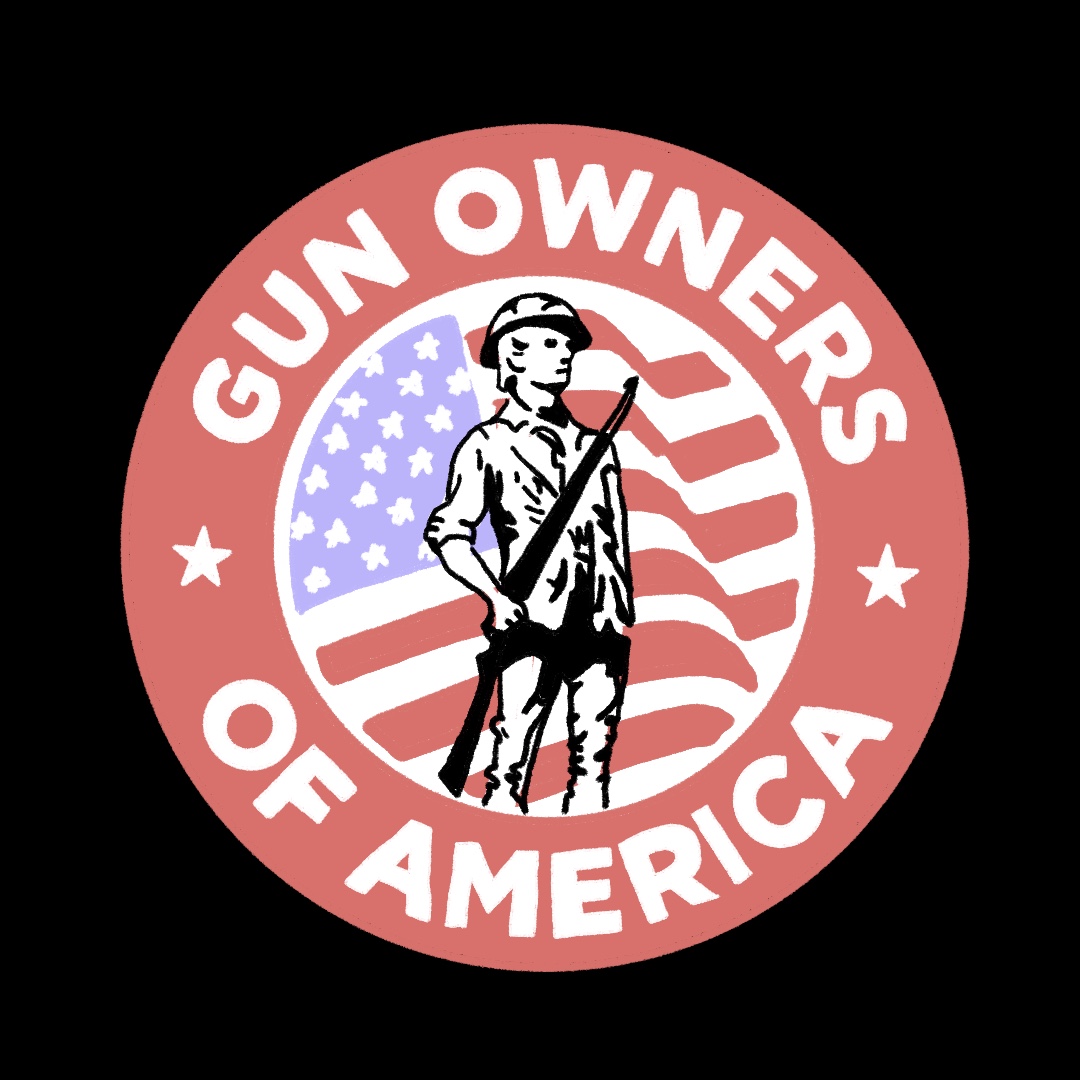
Name: Gun Owners of America
Known for: its “no compromise” brand, leader: erich pratt, annual revenue in 2022: $7 million.
Established in 1976, GOA has long styled itself as a more radical, no-compromise alternative to the NRA. For decades it was led by Larry Pratt, who espouses Biblical rule over civil society. Pratt moved in militia and white supremacist circles in the 1990s, but has denied being a racist.
Pratt’s son, Erich, now leads the GOA, which has recently become stronger . The group saw revenue grow from $4.8 million in 2018 to $7 million in 2022. Its spending on lobbying increased every year from 2018 to 2022, going from $1.5 million to $3.3 million. Last year, the figure dropped to $2.7 million — which was still more than what the NRA spent.
The organization is more active in Second Amendment litigation than the NRA, but is not as significant a player in the federal courts as the SAF. It often brings suits against the FBI and other federal law enforcement agencies. Its most recent suit against the FBI is an attempt to shake loose internal assessments of extremist groups, particularly those that detail the visual symbols and imagery that the FBI believes the groups employ. The suit was apparently spurred by an exchange in which Senator Ted Cruz grilled FBI Director Christopher Wray.
Attorney William J. Olson represents GOA in the suit and has long been a counsel for the group. Olson, who promoted a conspiracy theory that Vice President Kamala Harris is not eligible for her office, advised former President Donald Trump on ways to subvert the 2020 election.
The organization, which claims to have 2 million members, recently announced that it plans to hold its first convention in Knoxville, Tennessee, this August.
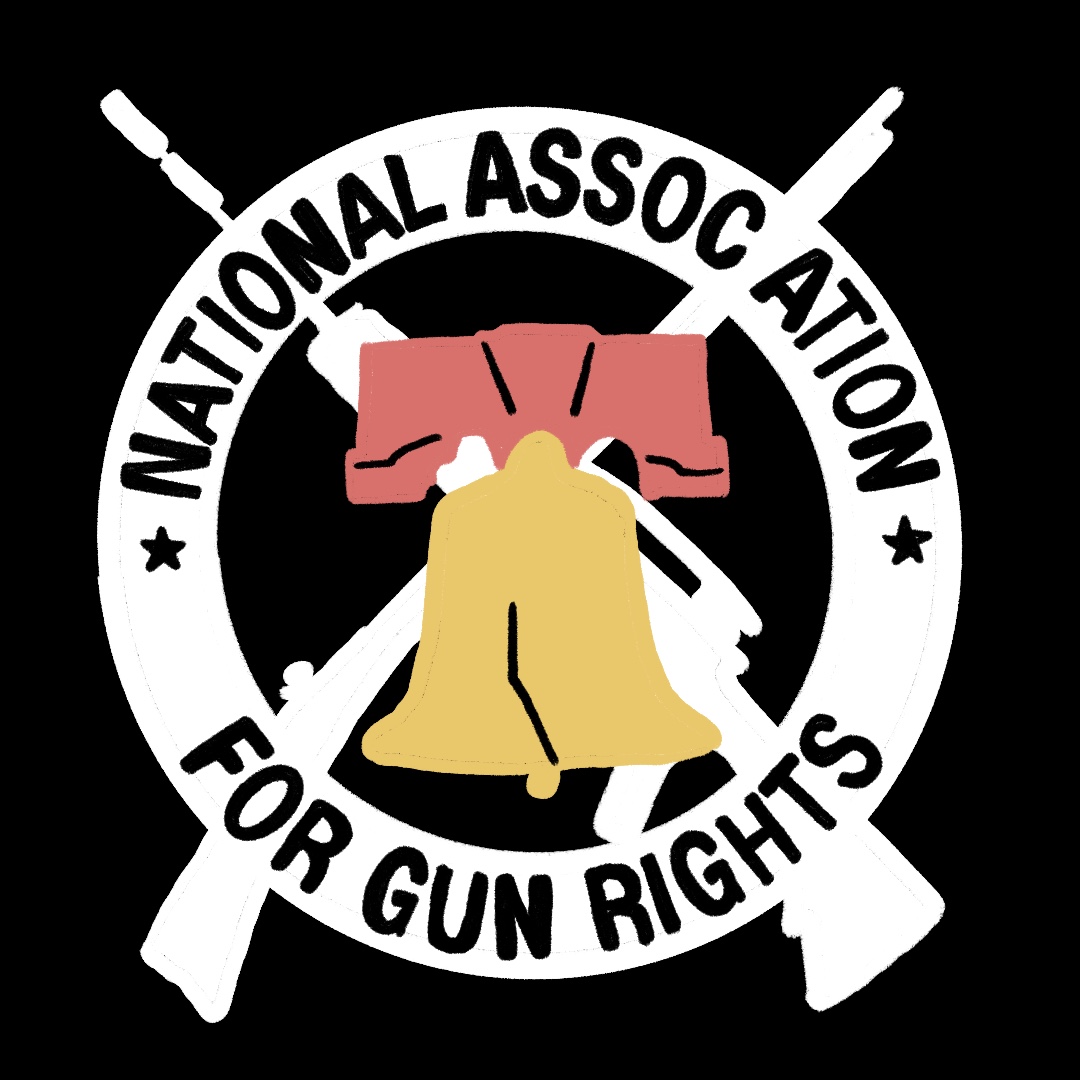
Name: National Association for Gun Rights
Known for: criticism of other gun groups, leader: dudley brown, annual revenues in 2022: $10.4 million.
Another group that touts its total opposition to firearms regulation, the association was founded by Dudley Brown, a firebrand known to attack other gun rights organizations for allegedly making concessions to hostile forces. An SAF press release from 2014 described Brown, who also founded Rocky Mountain Gun Owners, a Colorado-based group, as “a political bomb-throwing bully whose stock in trade is to incite distrust and discontent within the ranks of the gun rights movement, to enhance his own fund-raising efforts and power base.”
The movement has no shortage of such provocateurs .
Association revenue fluctuates considerably, with a recent high of $15.6 million in 2021. The $10.4 million it collected in 2022 is the group’s median revenue amount over the last decade.
The only newsroom dedicated to reporting on gun violence.
Your tax-deductible donation to The Trace will directly support nonprofit journalism on gun violence and its effects on our communities.
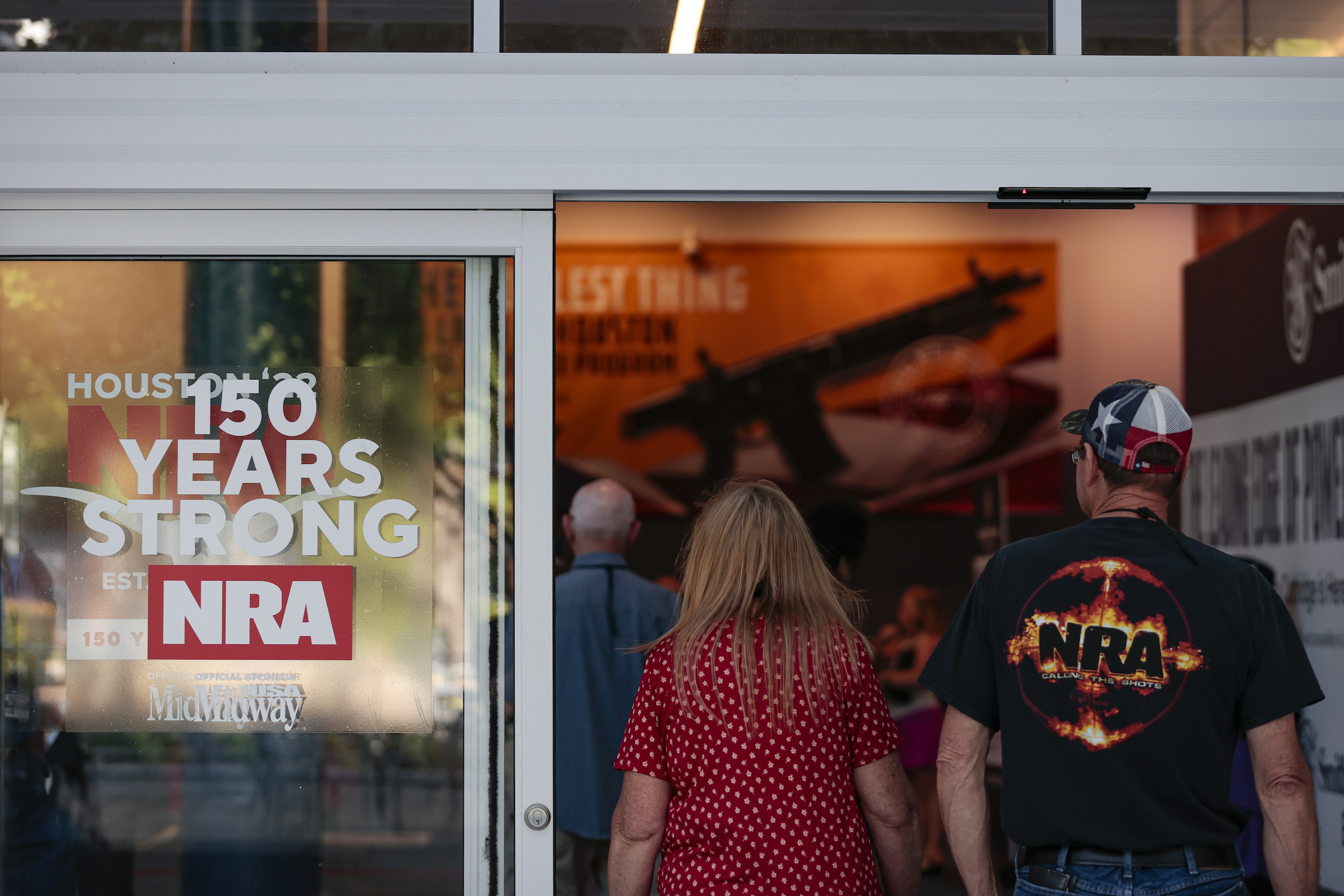
National Rifle Association
How the NRA Ended Up on Trial for Corruption
A timeline of the reporting and investigations since The Trace exposed self-dealing at the nonprofit nearly five years ago.
Jury Finds the NRA, Wayne LaPierre Liable in Corruption Case
The unmasking of wayne lapierre, jury weighs thorny nra corruption charges.

Wyoming’s Governor Takes Bold Stand Against Concealed Carry With Veto
Posted: April 3, 2024 | Last updated: April 3, 2024
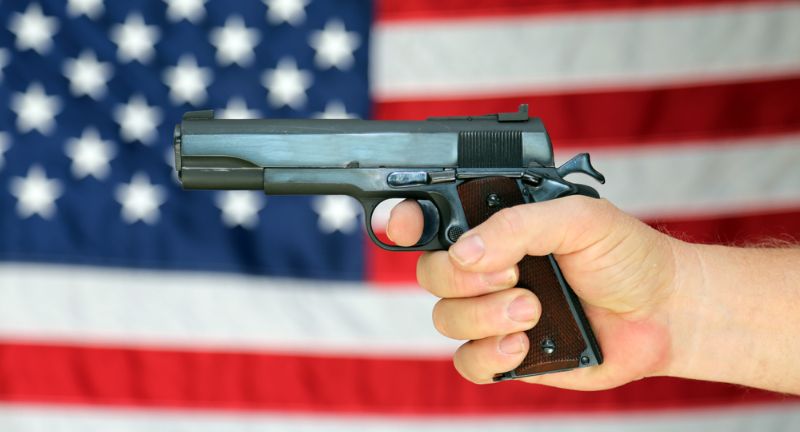
In the heart of the Wild West, where the spirit of freedom and the echoes of the frontier days still resonate, Wyoming’s recent legislative tussle over concealed firearms in public spaces has sparked a fiery debate. Governor Mark Gordon, standing at the crossroads of constitutional rights and public safety, vetoed a controversial bill that would have allowed concealed guns in schools and government meetings, citing an overreach into local control and a potential imbalance in the separation of powers.
This bold move places Wyoming at the epicenter of a national conversation on gun rights, blending the state’s storied gun-friendly ethos with complex constitutional considerations. As the dust settles on this decision, the discussion it has ignited about the balance between individual freedoms and community safety promises to ripple far beyond the Cowboy State’s borders, challenging and perhaps reshaping the American narrative on gun legislation.

Veto of Concealed Carry Bill
Wyoming’s Republican Governor, Mark Gordon, vetoed a bill that proposed allowing people to carry concealed guns in public schools and government meetings. This decision was based on concerns related to the separation of powers provision in the state constitution.
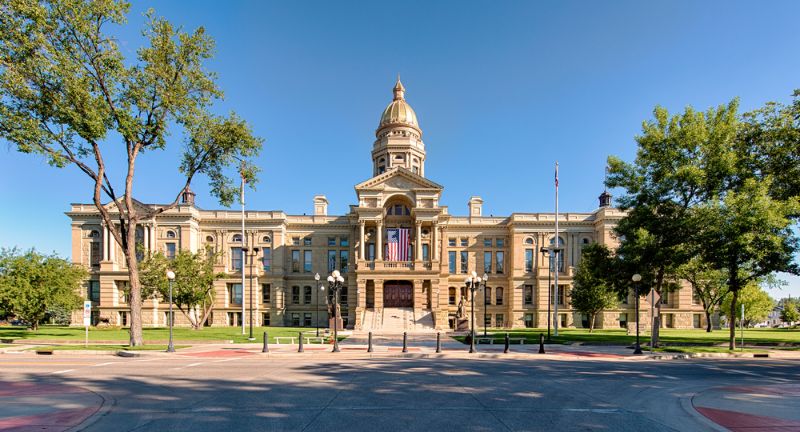
Constitutional Concerns
Governor Gordon expressed concerns that the bill would improperly extend legislative authority by requiring legislative approval for any policy or further regulation regarding the carrying of firearms in state facilities. This, he argued, eroded local control norms and gave undue micromanagement power to the Legislature over a constitutionally protected right.
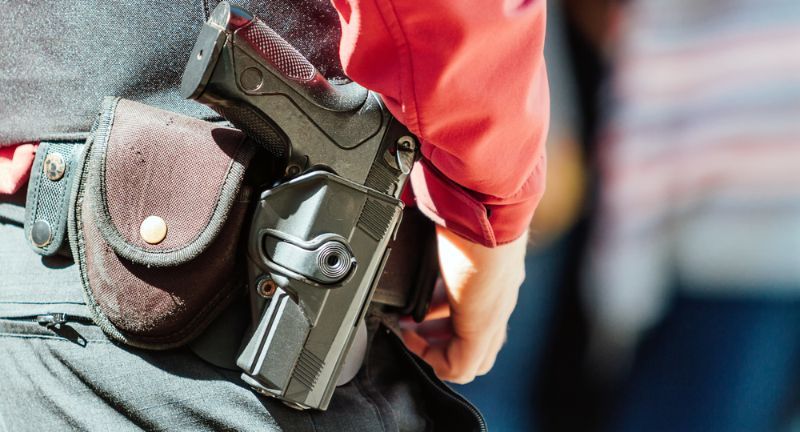
Bill’s Provisions
The vetoed bill sought to require state facilities, including educational institutions and the Wyoming State Hospital, to obtain legislative approval to restrict carrying firearms. It aimed at centralizing control over gun regulation decisions within the Legislature.

Exemptions and Restrictions
While the bill proposed allowing concealed carry in schools and government meetings, it maintained prohibitions on open carry in these environments. Furthermore, it kept existing bans on guns in jails, courts, police stations, hospitals, and private property at the owner’s discretion.
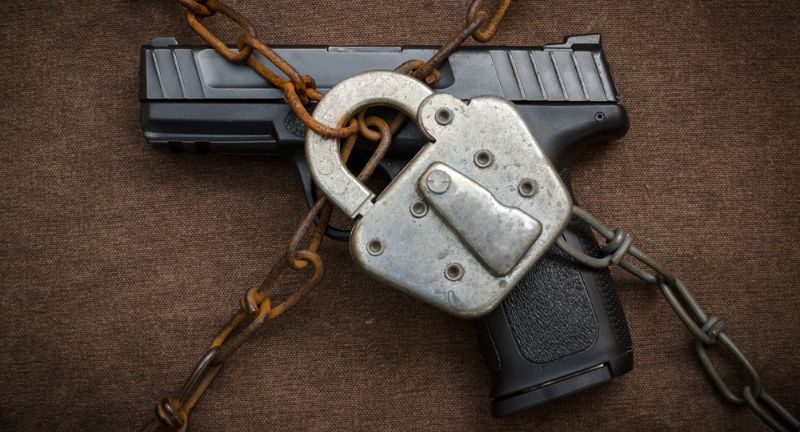
Education Sector Impact
Had it been enacted, the bill would have permitted concealed firearms in public schools, the University of Wyoming, community colleges (in areas not serving alcohol), and during government meetings, provided the individuals had the necessary permits.
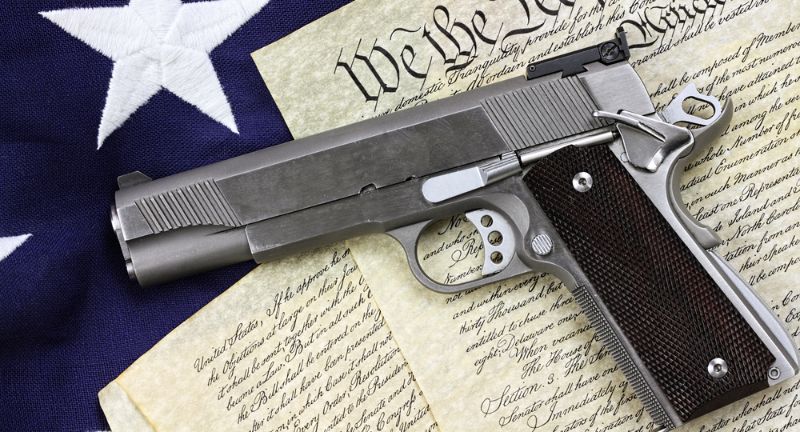
Second Amendment Rights
Proponents of the bill argued that prohibiting guns in schools and meetings violated their Second Amendment rights. Wyoming, known for its gun-friendly stance, saw a debate on balancing these rights with safety concerns in sensitive areas.
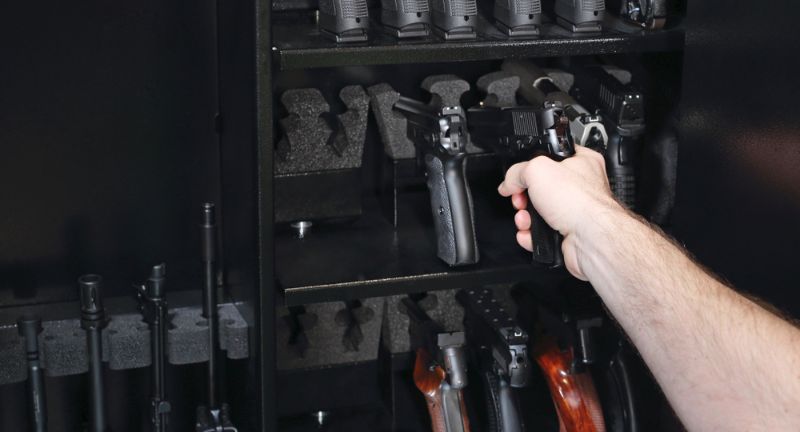
Local Control and Opposition
Critics of the bill, including some Democrats in the Wyoming Senate, argued against it citing a lack of demand from educators and students, and appealed to the principle of local governance being the most effective.
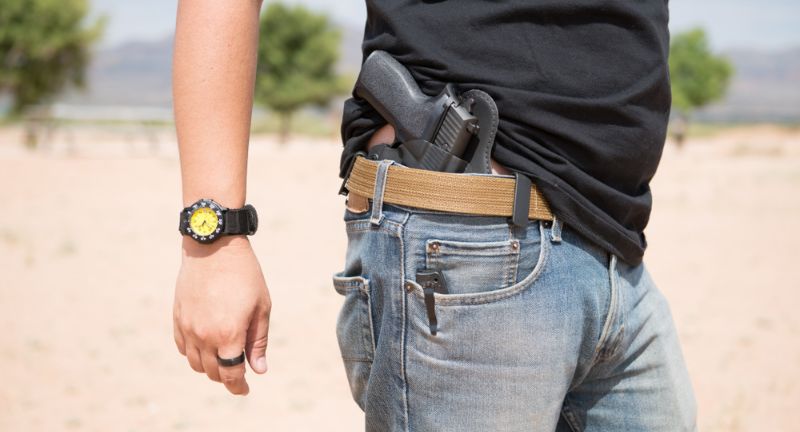
Other Gun Rights Bills Signed
Despite vetoing this particular bill, Governor Gordon signed four other bills related to gun rights. These included legislation prohibiting certain tracking of firearm purchases, banning the enforcement of red flag gun laws, amending regulations for restored firearms rights, and establishing reimbursement for school districts for firearms-related costs.

Future Considerations for Concealed Carry
Following the veto, Governor Gordon directed state officials to evaluate the possibility of allowing concealed carry in the Capitol and other state buildings, indicating an ongoing consideration of gun rights in public spaces.
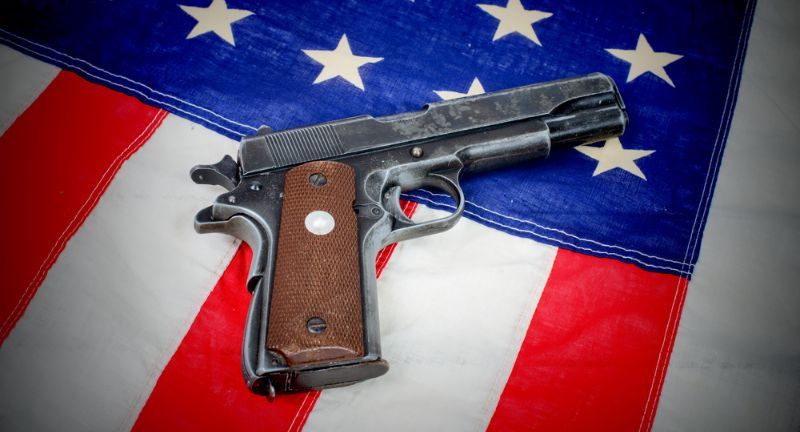
National Context and Precedents
The debate in Wyoming reflects a wider national discussion on gun rights in educational settings. Several states have already enacted laws allowing concealed carry in schools by permit holders, showcasing a diverse landscape of gun regulation across the United States.
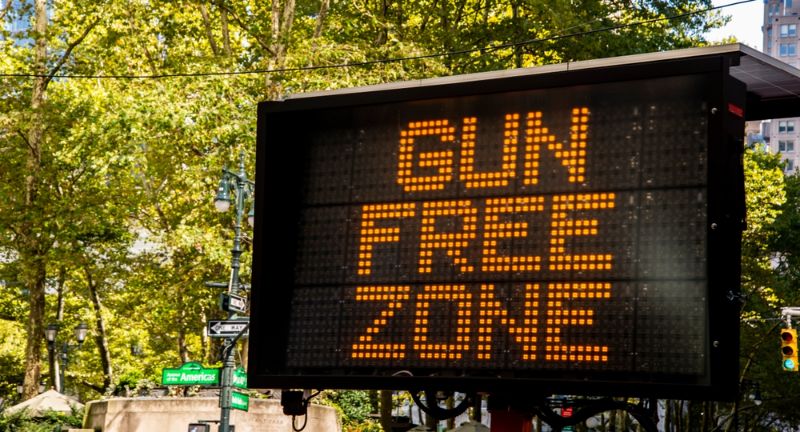
Governor Mark Gordon’s veto of the concealed carry bill in Wyoming underscores the intricate balance between gun rights and public safety in American society. This decision not only highlights the nuanced debate over the Second Amendment but also reaffirms the importance of local control in the regulation of firearms. As Wyoming continues to navigate these complex waters, the conversation sparked by this legislation will likely influence future discussions on gun rights across the nation.
Ultimately, this episode in Wyoming’s legislative history serves as a poignant reminder of the ongoing effort to reconcile individual freedoms with the collective well-being of the community.
What To Read Next
- This Genius Trick Every Online Shopper Should Know
- Best High-Yield Savings Accounts This Month
- Best Gold IRA This Year
- Deals On Popular Cruises
- The Best Internet Deals For Seniors
- Affordable Life Insurance Options for Seniors
For the Latest Breaking Crime & Justice News, Headlines & Videos, head to Body Cams+
More for You
Democrat Judge Exempts NRA Members From New Gun Rule
Where to Get Free Food on National Burrito Day
25 movies that will really mess with your head
How Much Does It Actually Cost To Purchase A Tank?
I'm abrosexual - it took me 30 years to realise
The True Cost of the Churchgoing Bust
After terror attack, Russia sees U.S. role and claims it is at war with NATO
Pop-Tarts Is Launching a First-Of-Its-Kind Crunchy Snack
Ryan Reynolds and Rob McElhenney are owed $11.3 million from their Welsh soccer club Wrexham, as the Hollywood duo pay players well above average
Basketball teams ordered to replay final 0.3 seconds of quarter-final tie
The 100 best movies of all time, based on data
8 Places You Should Never Charge Your Phone
US Military's 'Groundbreaking' New Missile Reaches Milestone
Justin Thomas and caddie Jim ‘Bones’ Mackay shockingly split ahead of the Masters
36-year-old brought in $77,000 in passive income from Etsy in 2023—she spends 5-10 minutes per day on it
The 9 best whiskey quotes of all time
Carvel is bringing back a fan-favorite flavor gone for more than 50 years
20 unforgettable moments in live television history
I Lost White Friends When I Finally Spoke Out
Trump loses hush-money 'presidential immunity' bid after claiming statements about Stormy Daniels were 'official acts'
- Share full article
For more audio journalism and storytelling, download New York Times Audio , a new iOS app available for news subscribers.

- April 3, 2024 • 27:42 The Accidental Tax Cutter in Chief
- April 2, 2024 • 29:32 Kids Are Missing School at an Alarming Rate
- April 1, 2024 • 36:14 Ronna McDaniel, TV News and the Trump Problem
- March 29, 2024 • 48:42 Hamas Took Her, and Still Has Her Husband
- March 28, 2024 • 33:40 The Newest Tech Start-Up Billionaire? Donald Trump.
- March 27, 2024 • 28:06 Democrats’ Plan to Save the Republican House Speaker
- March 26, 2024 • 29:13 The United States vs. the iPhone
- March 25, 2024 • 25:59 A Terrorist Attack in Russia
- March 24, 2024 • 21:39 The Sunday Read: ‘My Goldendoodle Spent a Week at Some Luxury Dog ‘Hotels.’ I Tagged Along.’
- March 22, 2024 • 35:30 Chuck Schumer on His Campaign to Oust Israel’s Leader
- March 21, 2024 • 27:18 The Caitlin Clark Phenomenon
- March 20, 2024 • 25:58 The Bombshell Case That Will Transform the Housing Market
The Accidental Tax Cutter in Chief
President biden says he wants to rake in more money from corporations and high earners. but so far, he has cut more taxes than he’s raised..
Hosted by Michael Barbaro
Featuring Jim Tankersley
Produced by Stella Tan and Mary Wilson
With Michael Simon Johnson
Edited by Lisa Chow
Original music by Dan Powell and Marion Lozano
Engineered by Chris Wood
Listen and follow The Daily Apple Podcasts | Spotify | Amazon Music
In his campaign for re-election, President Biden has said that raising taxes on the wealthy and on big corporations is at the heart of his agenda. But under his watch, overall net taxes have decreased.
Jim Tankersley, who covers economic policy for The Times, explains.
On today’s episode

Jim Tankersley , who covers economic policy at the White House for The New York Times.

Background reading
An analysis prepared for The New York Times estimates that the tax changes President Biden has ushered into law will amount to a net cut of about $600 billion over four years.
“Does anybody here think the tax code’s fair?” For Mr. Biden, tax policy has been at the center of his efforts to make the economy more equitable.
There are a lot of ways to listen to The Daily. Here’s how.
We aim to make transcripts available the next workday after an episode’s publication. You can find them at the top of the page.
The Daily is made by Rachel Quester, Lynsea Garrison, Clare Toeniskoetter, Paige Cowett, Michael Simon Johnson, Brad Fisher, Chris Wood, Jessica Cheung, Stella Tan, Alexandra Leigh Young, Lisa Chow, Eric Krupke, Marc Georges, Luke Vander Ploeg, M.J. Davis Lin, Dan Powell, Sydney Harper, Mike Benoist, Liz O. Baylen, Asthaa Chaturvedi, Rachelle Bonja, Diana Nguyen, Marion Lozano, Corey Schreppel, Rob Szypko, Elisheba Ittoop, Mooj Zadie, Patricia Willens, Rowan Niemisto, Jody Becker, Rikki Novetsky, John Ketchum, Nina Feldman, Will Reid, Carlos Prieto, Ben Calhoun, Susan Lee, Lexie Diao, Mary Wilson, Alex Stern, Dan Farrell, Sophia Lanman, Shannon Lin, Diane Wong, Devon Taylor, Alyssa Moxley, Summer Thomad, Olivia Natt, Daniel Ramirez and Brendan Klinkenberg.
Our theme music is by Jim Brunberg and Ben Landsverk of Wonderly. Special thanks to Sam Dolnick, Paula Szuchman, Lisa Tobin, Larissa Anderson, Julia Simon, Sofia Milan, Mahima Chablani, Elizabeth Davis-Moorer, Jeffrey Miranda, Renan Borelli, Maddy Masiello, Isabella Anderson and Nina Lassam.
Jim Tankersley writes about economic policy at the White House and how it affects the country and the world. He has covered the topic for more than a dozen years in Washington, with a focus on the middle class. More about Jim Tankersley
Advertisement

IMAGES
VIDEO
COMMENTS
History of Gun Control Laws. Gun control laws are just as old or older than the Second Amendment (ratified in 1791). Some examples of gun control throughout colonial America included criminalizing the transfer of guns to Catholics, enslaved people, indentured servants, and Native Americans; regulating the storage of gun powder in homes; banning loaded guns in Boston houses; and mandating ...
These laws have been in place for decades, and by now, the evidence is crystal clear. Gun control doesn't work. Some of the key reasons are detailed below. Criminals Don't Obey Gun Control ...
Eric Thayer/Getty Images. The nationwide gun control debate resurfaced on Tuesday, after an 18-year-old shooter entered Robb Elementary School in Uvalde, Texas, and killed 19 students and two ...
Published: April 1, 2021 11:00am EDT. Gun control is back in the U.S. political debate, in the wake of mass shootings in California, Boulder and Atlanta. Democrats see stricter gun control as a ...
And this gets to perhaps the biggest reason Americans are unlikely to accept strict gun control parameters or even more limited gun control any time soon. Baked into the ethos of the United States ...
Encyclopædia Britannica, Inc. To access extended pro and con arguments, sources, and discussion questions about whether more gun control laws should be enacted, go to ProCon.org.. The United States has 120.5 guns per 100 people, or about 393,347,000 guns, which is the highest total and per capita number in the world. 22% of Americans own one or more guns (35% of men and 12% of women).
By The New York Times. Published Jan. 26, 2023 Updated Jan. 26, 2023. As the number of mass shootings in America continues to rise, gun control — a term used to describe a wide range of ...
The argument over guns has simply become too politically divisive and culturally entrenched to allow for meaningful change. It is important to remember that guns are normal in many parts of America.
Updated January 10, 2023. Good public policies are based on facts and data, and the most effective laws—including gun laws—are written when policymakers understand the effects of such laws on a range of outcomes and can weigh the inherent trade-offs. For gun policies, relevant outcomes can include, among others, the health of the gun ...
Support for an assault weapons ban varied greatly along political lines, with 81% of Democrats, 55% of independents and 33% of Republicans in favor. Where Americans stand on gun control measures ...
Gun control is back in the U.S. political debate, in the wake of mass shootings in California, Boulder and Atlanta. Democrats see stricter gun control as a step toward addressing the problem. In ...
Sen. Richard Blumenthal (D-CT) speaks during a rally against gun violence outside the U.S. Capitol on June 6, 2022 in Washington, DC. Drew Angerer/Getty Images hide caption
A November poll conducted by Gallup found that 52% of Americans support stricter gun control, which marked the lowest rating on the question since 2014. Support for a ban on handguns also hit a ...
Gun safety will always be an issue in the United States. To reduce shootings and gun-related suicides, we need to raise the minimum age to purchase guns, ban assault weapons, and require a permit in all states to carry a handgun. Despite the ongoing arguments, gun control legislation must be passed. People are suffering mass tragedies as a ...
A psychological model of the polarized gun debate in America would ideally compare those for or against gun control legislation. However, research to date has instead focused mainly on differences ...
The major tests US gun control activists face in 2024. Gun safety groups say they remain undaunted as they plan to push for more change - but they will still face steep hurdles in a crucial ...
October 28, 2021, 6:06 AM. 11:16. A member of the public carries a pistol during a second amendment rally on Oct. 12, 2019, in Greeley, Pa. Spencer Platt/Getty Images, FILE. This report is a part ...
Gun Violence. The United States has disproportionately high rates of gun violence for a developed country (Grinshteyn & Hemenway, 2019; Naghavi et al., 2018).The U.S. homicide rate is estimated to be about seven times higher than other high-income countries, which researchers suggest is primarily driven by a gun homicide rate that is about 25 times higher (Grinshteyn & Hemenway, 2019).
Here's a look at some solutions to gun violence proposed by both sides of the gun-control debate.
In the US, the gun control conversation feels set in stone. We've fallen into a pattern: inevitably, a high-profile gun death leads to an outcry from the pro-gun-control crowd, to which anti-gun-control advocates respond with an amendment that's existed since 1791. Partisan gridlock and interest group funding has made it hard to pass national legislation on guns, but our conversations ...
This review provides a factual background to the debate about the issues surrounding the arguments for and against "Gun Control." The paper documents many factors that lead to violent crimes committed by people. ... despite the guarantee of the Second Amendment of the US Constitution. Gun Control is intended to make it easier to control the ...
Michael Boylan, PhD, Don B. Kates, JD, Ronald W. Lindsey, MD, and Zbigniew Gugala, MD, PhD. The issue of gun control in the United States generates heated and passionate debate whenever it comes up. To provide a brief glimpse into the wide spectrum of opinions on this topic, the symposium's guest editors have invited two prominent and ...
This week at least 59 people were killed and over 500 injured in the deadliest mass shooting in American history. Naturally, the gun control debate — the same one we have been having for decades — has ramped up again, and opponents are using redundant, deeply flawed arguments against even modest proposals like more background checks or a federal database to track gun sales.
The National Rifle Association is weakened. Last month, after years of revenue and membership declines, the group and its longtime boss and fundraising talisman Wayne LaPierre were found liable in a civil corruption case. Although LaPierre resigned on the eve of trial, jurors ruled that his misconduct had been egregious enough to warrant removal.. The NRA still has no equal in the gun rights ...
Wyoming, known for its gun-friendly stance, saw a debate on balancing these rights with safety concerns in sensitive areas. Shutterstock Local Control and Opposition
The Accidental Tax Cutter in Chief. President Biden says he wants to rake in more money from corporations and high earners. But so far, he has cut more taxes than he's raised. April 3, 2024, 6: ...